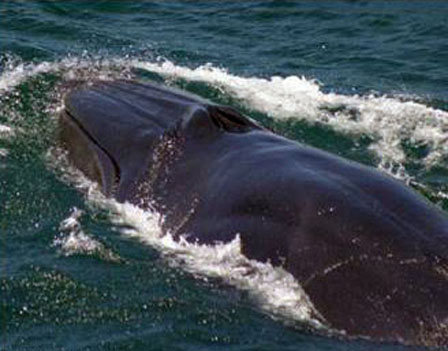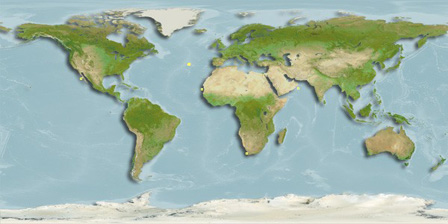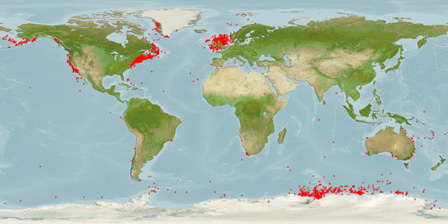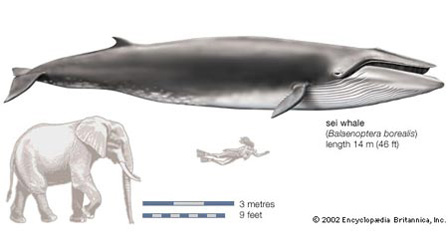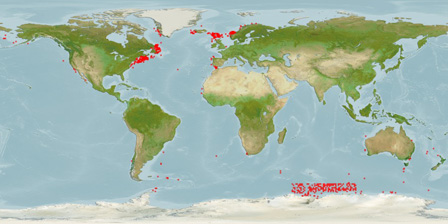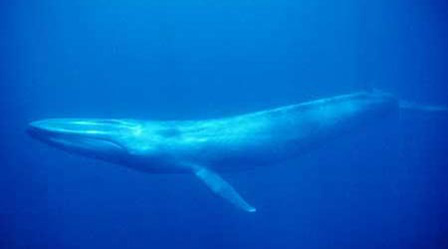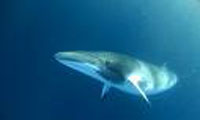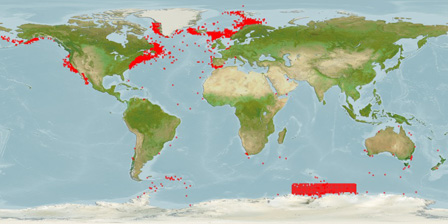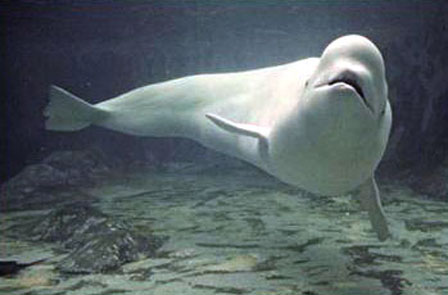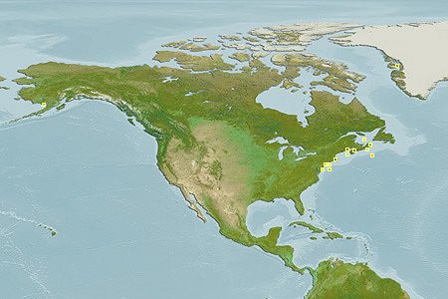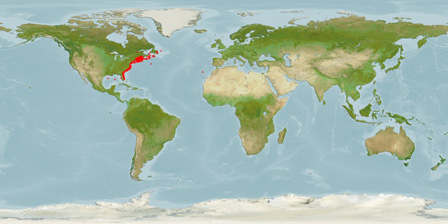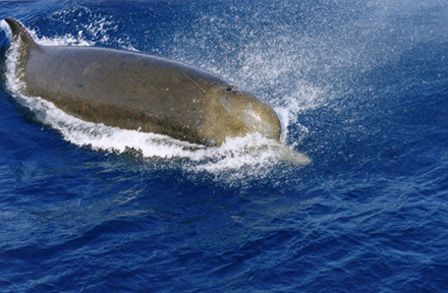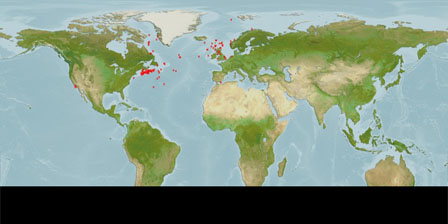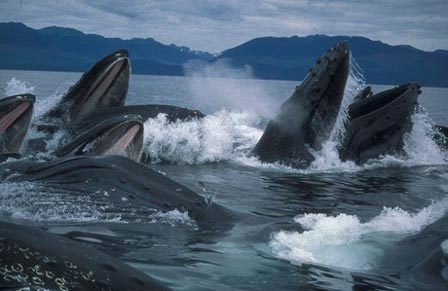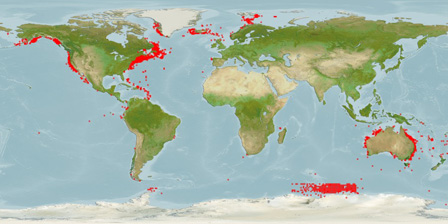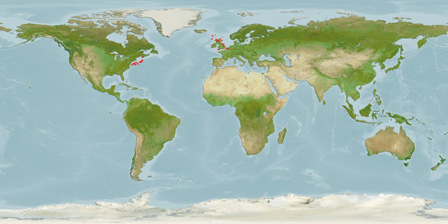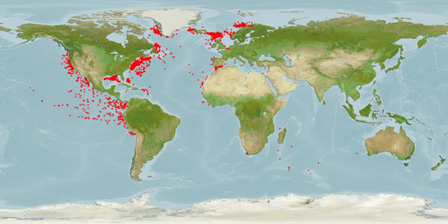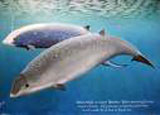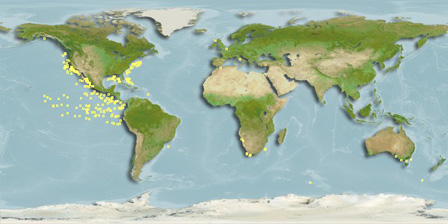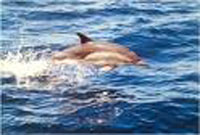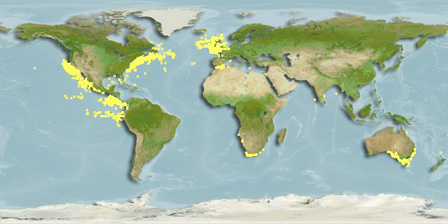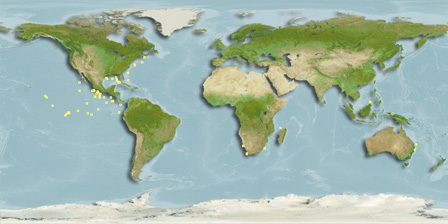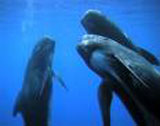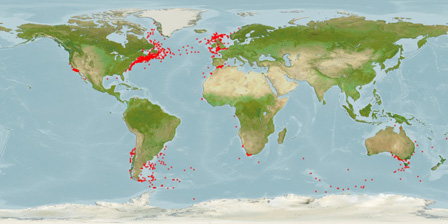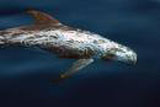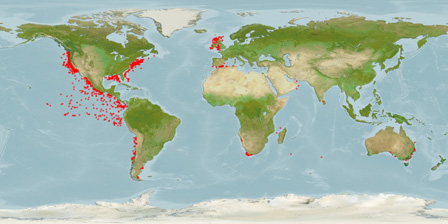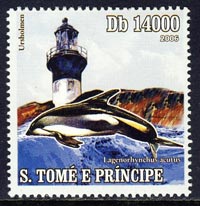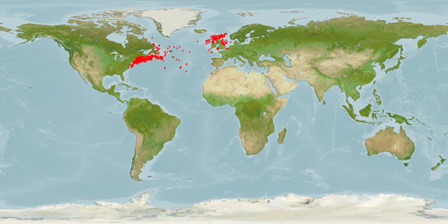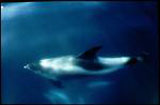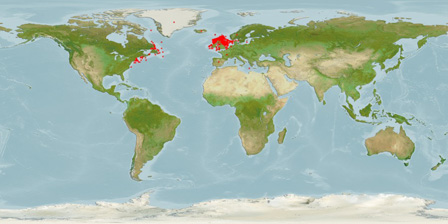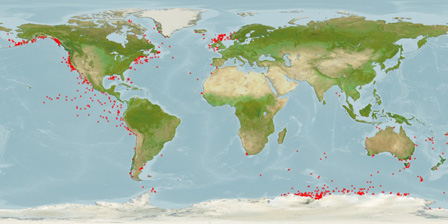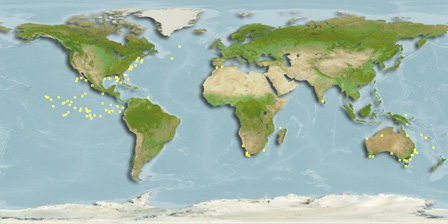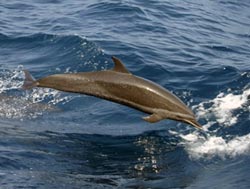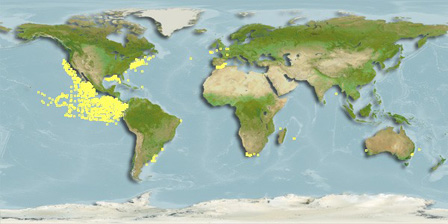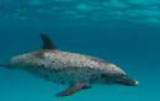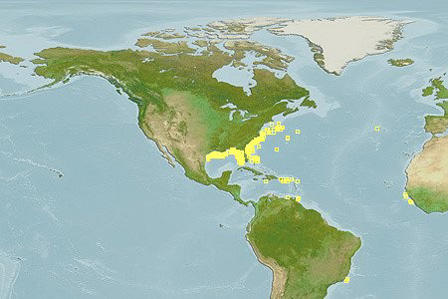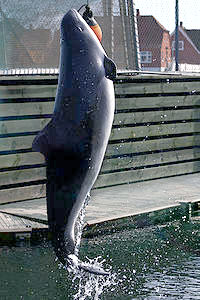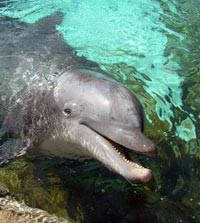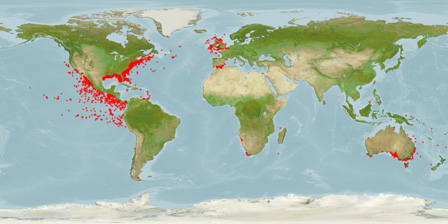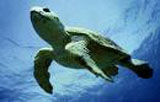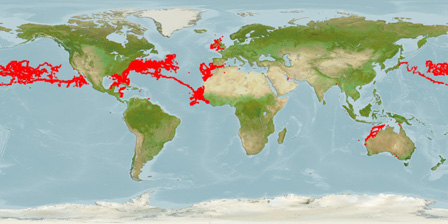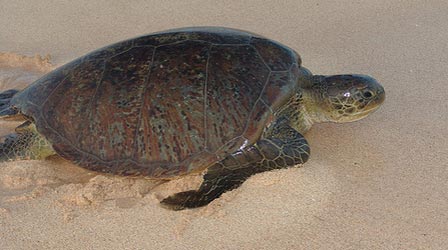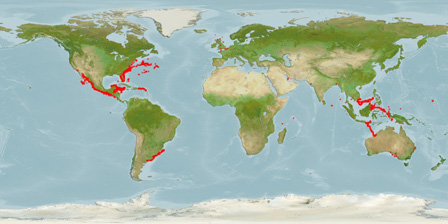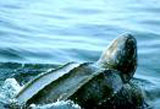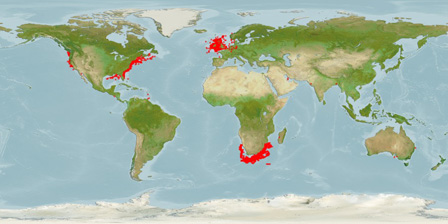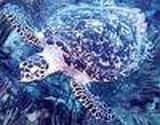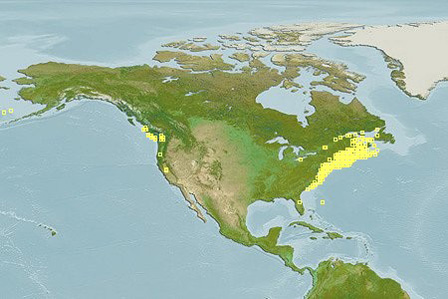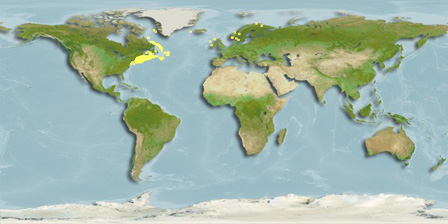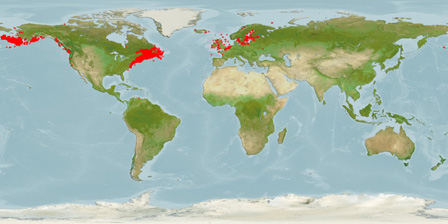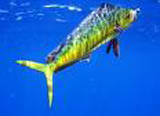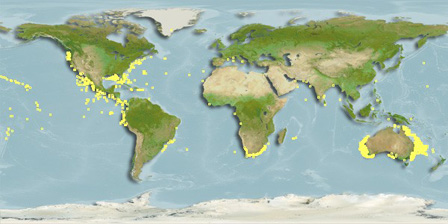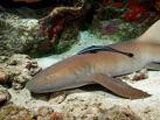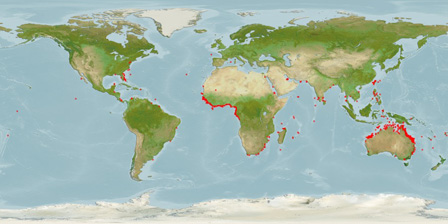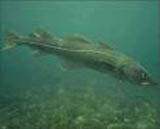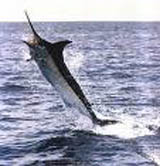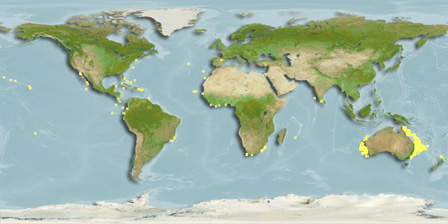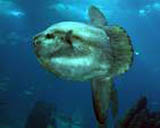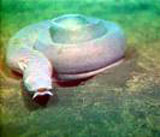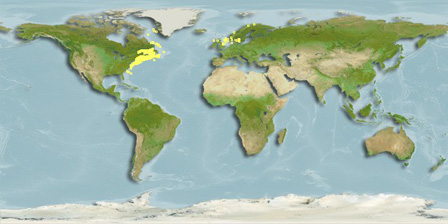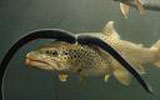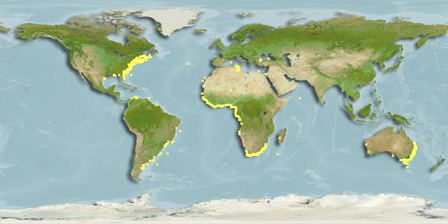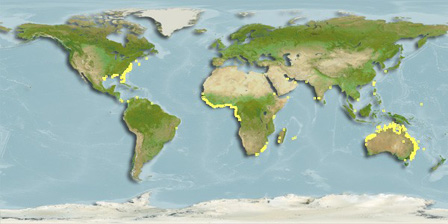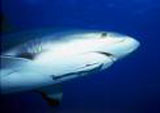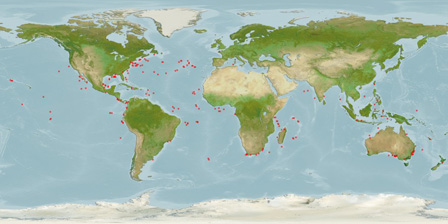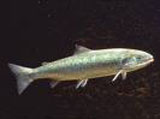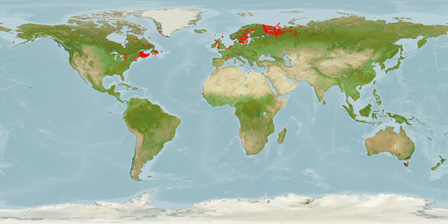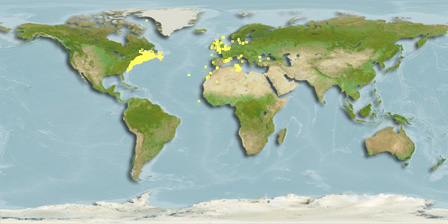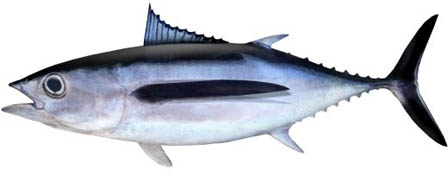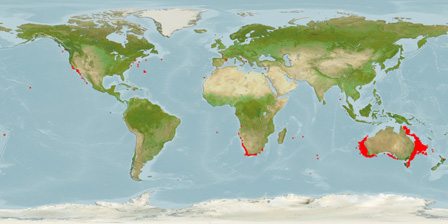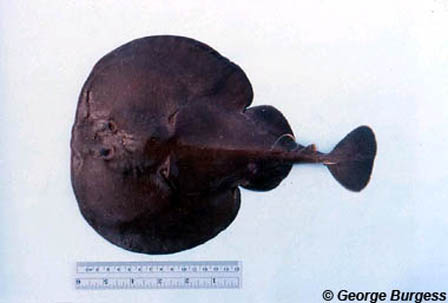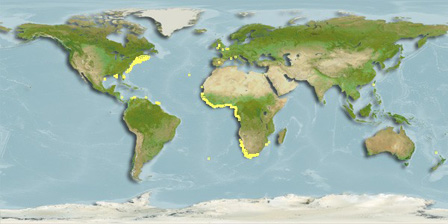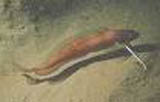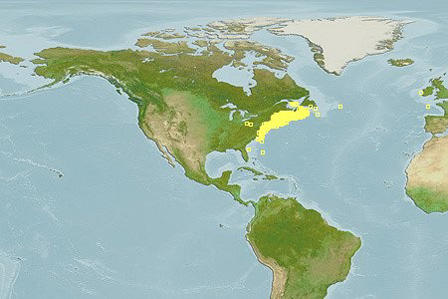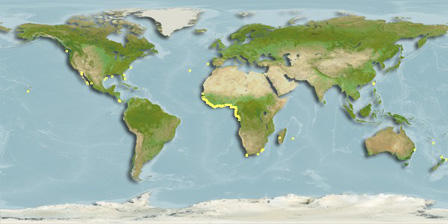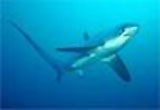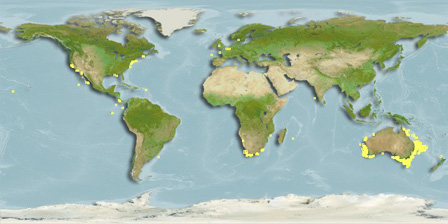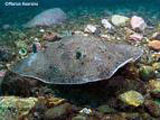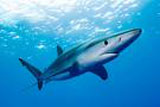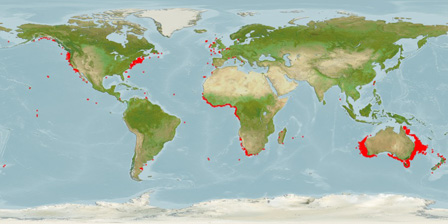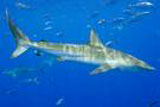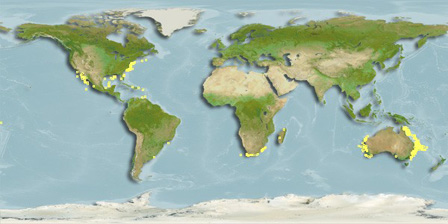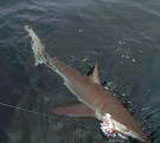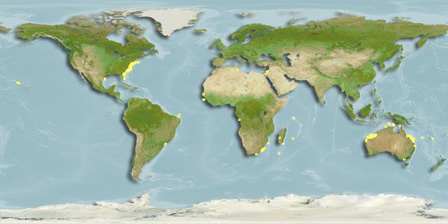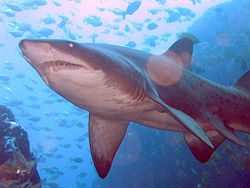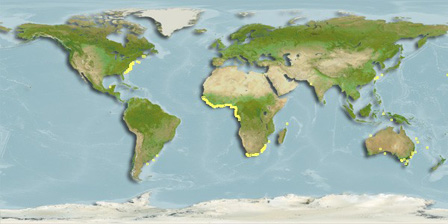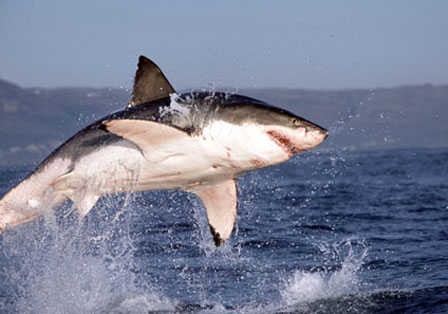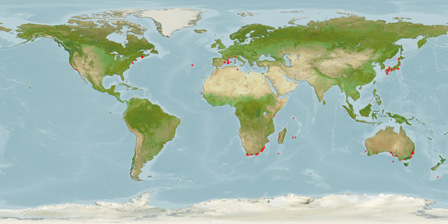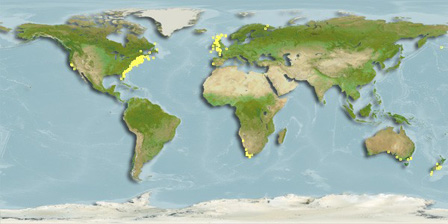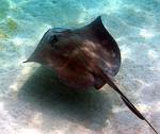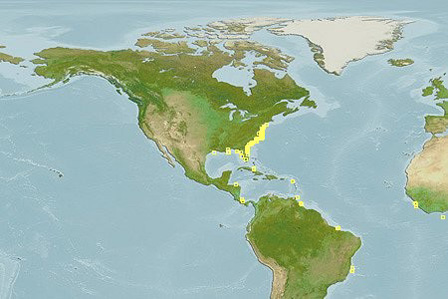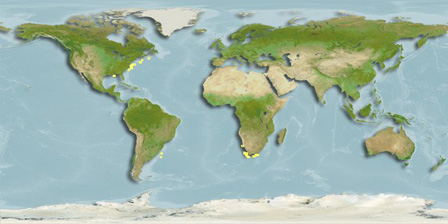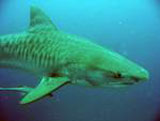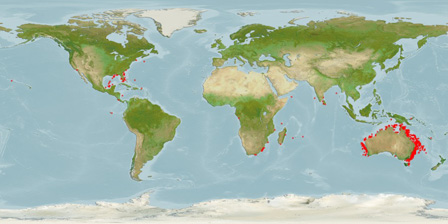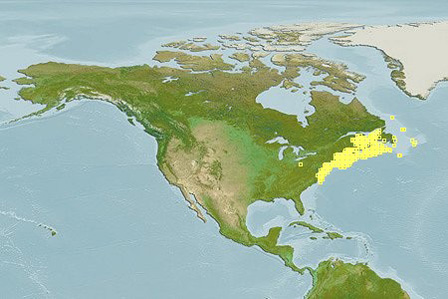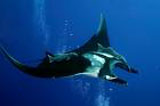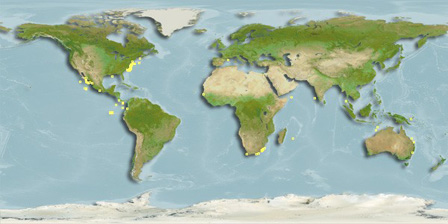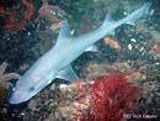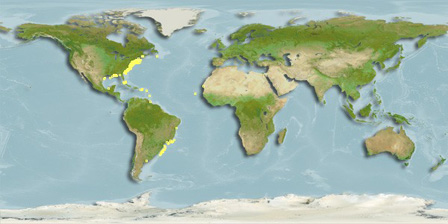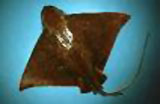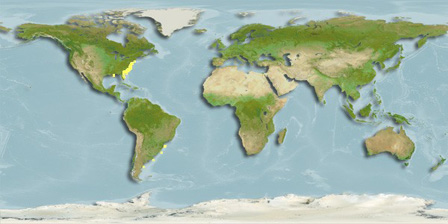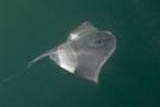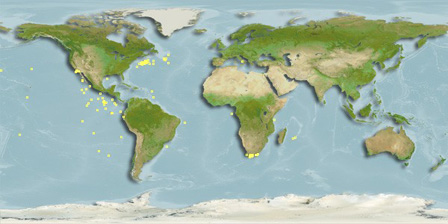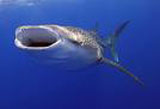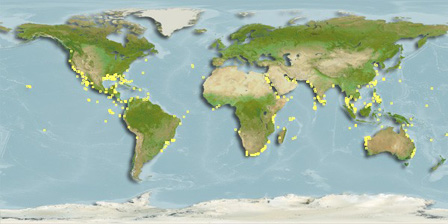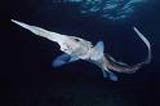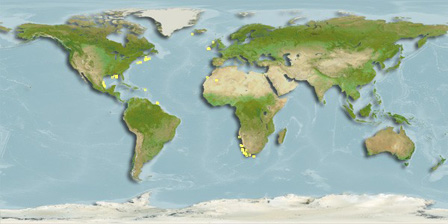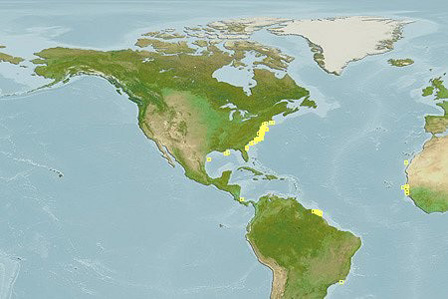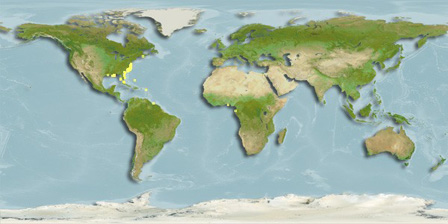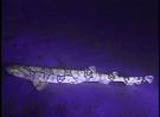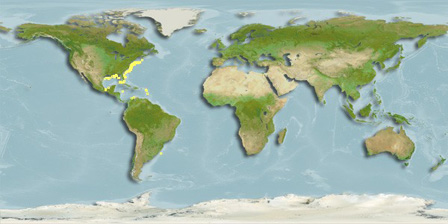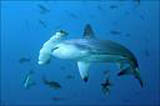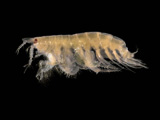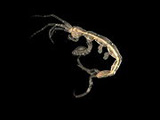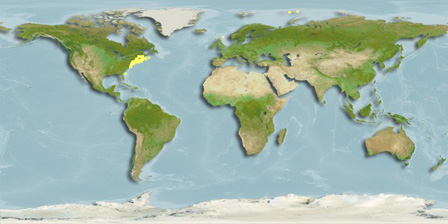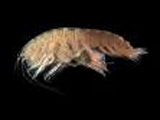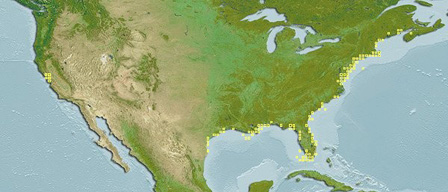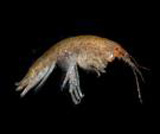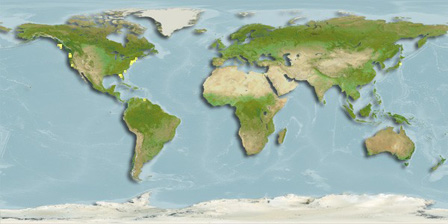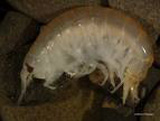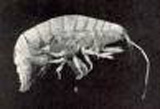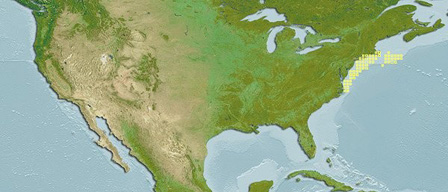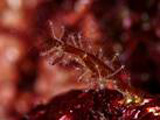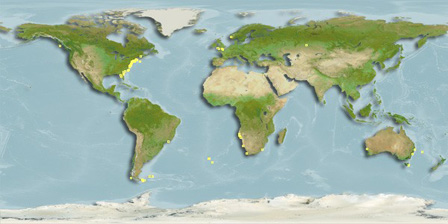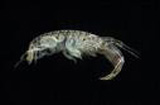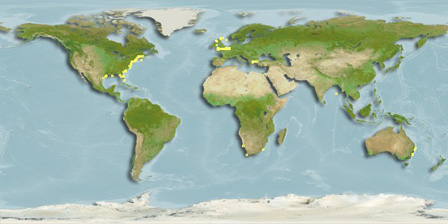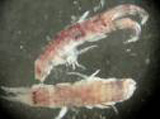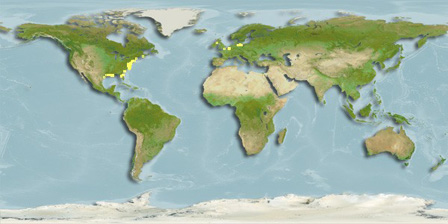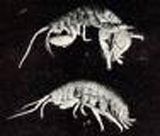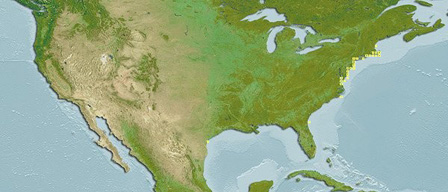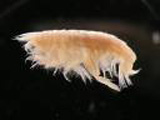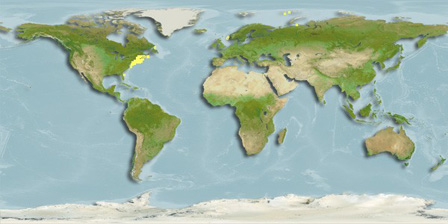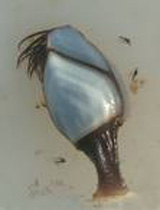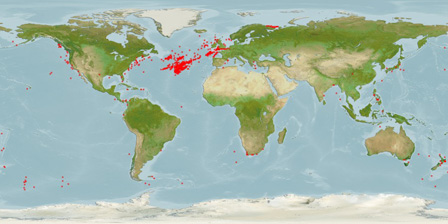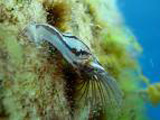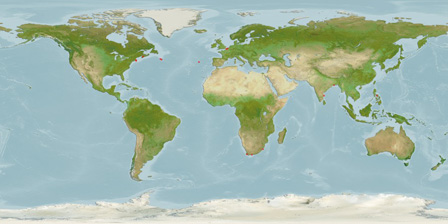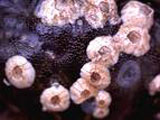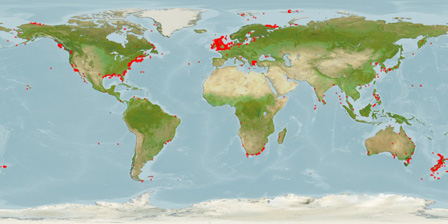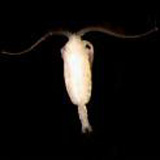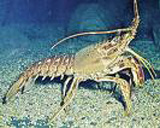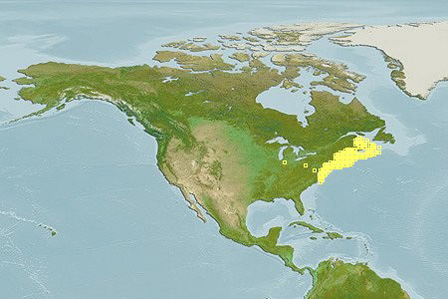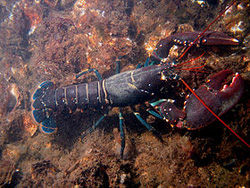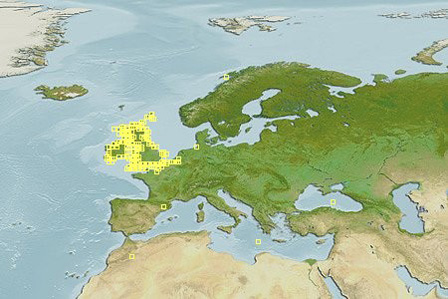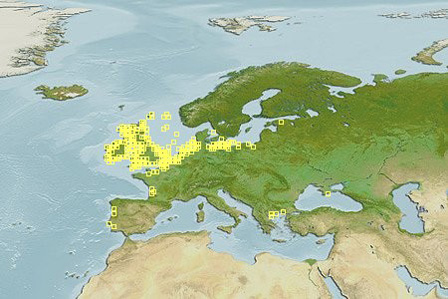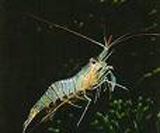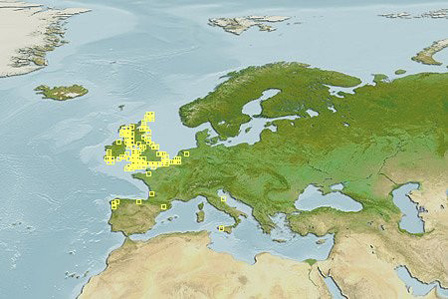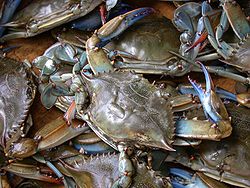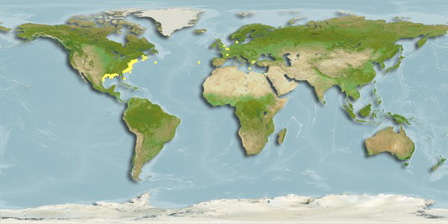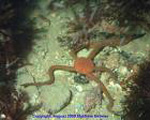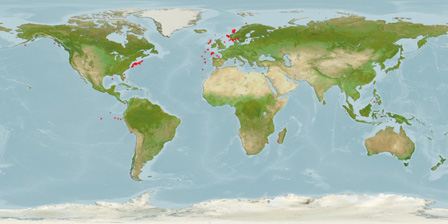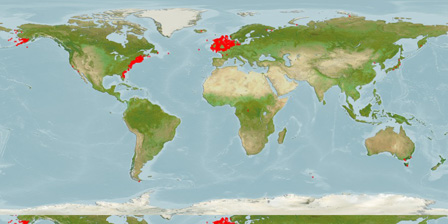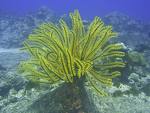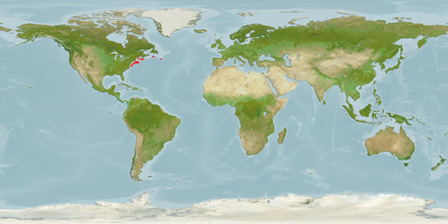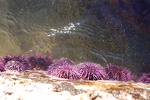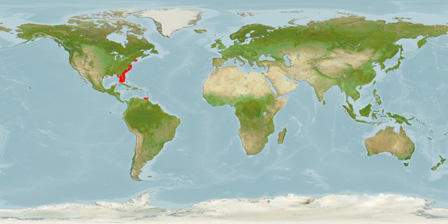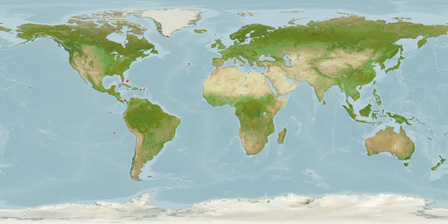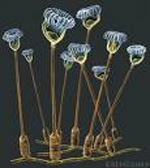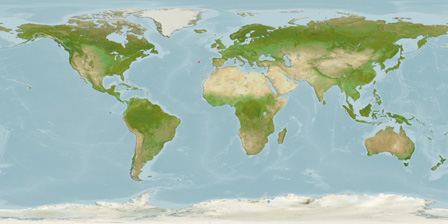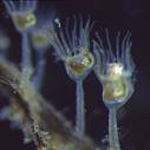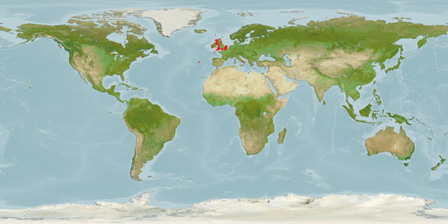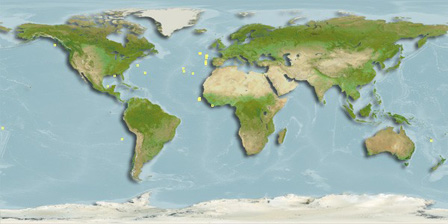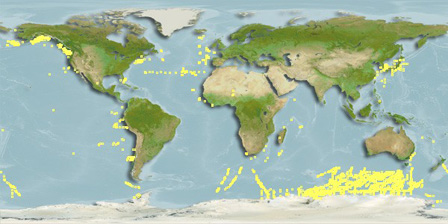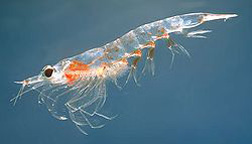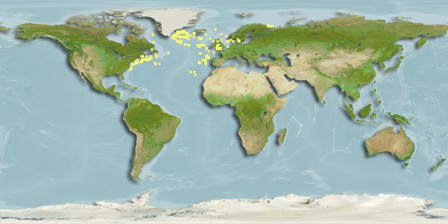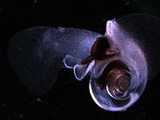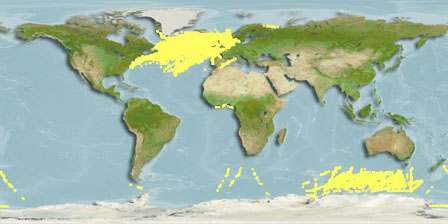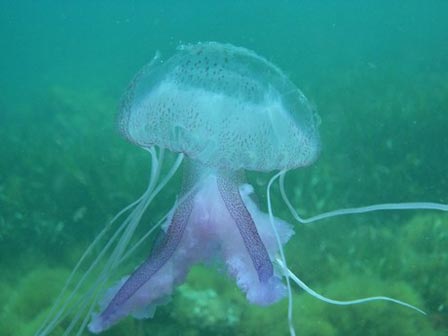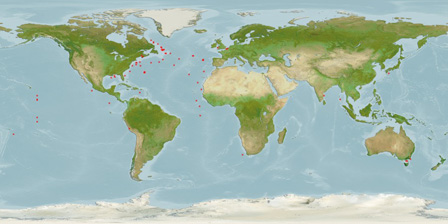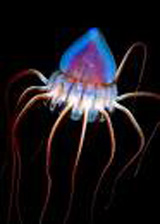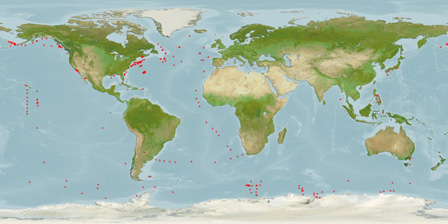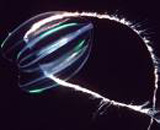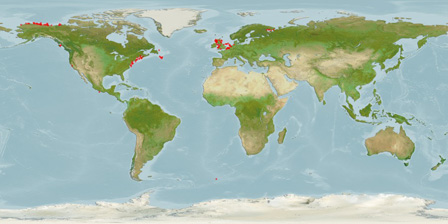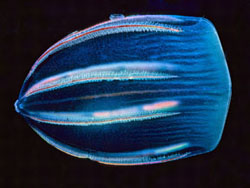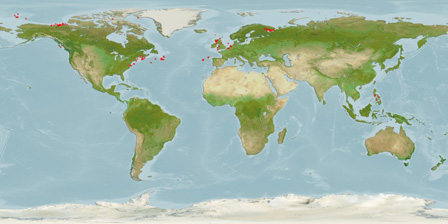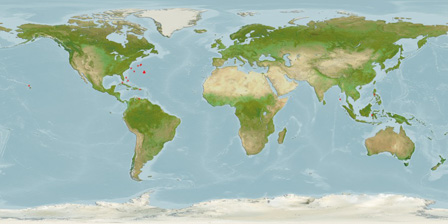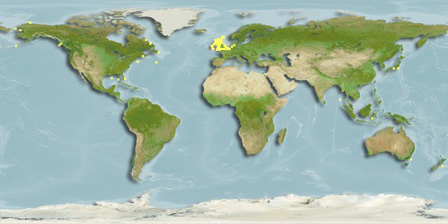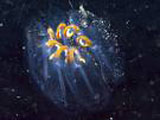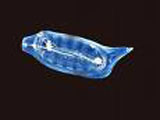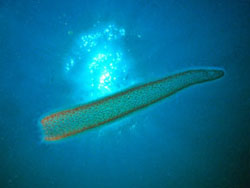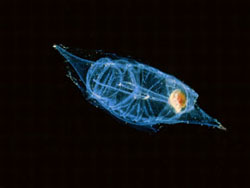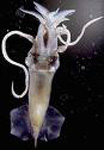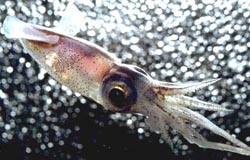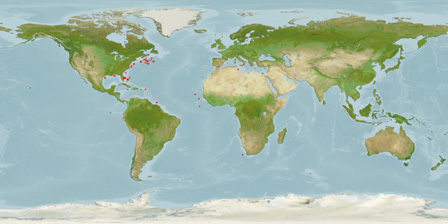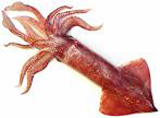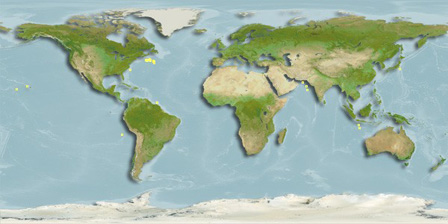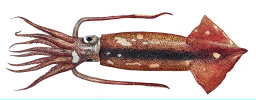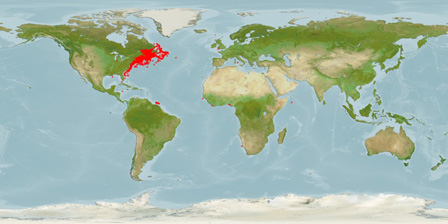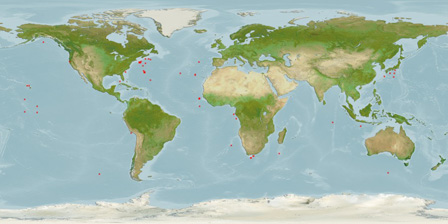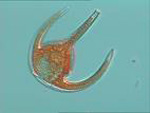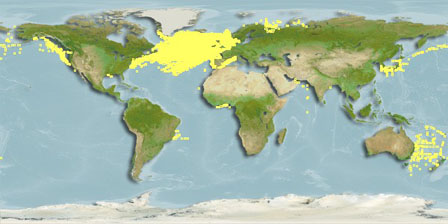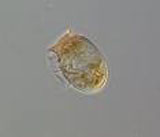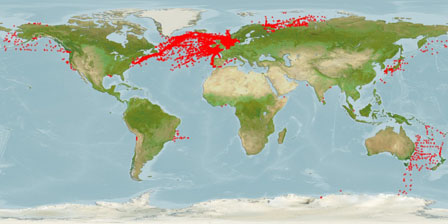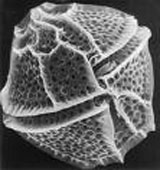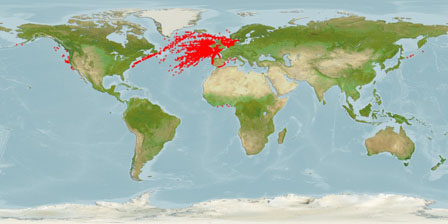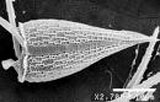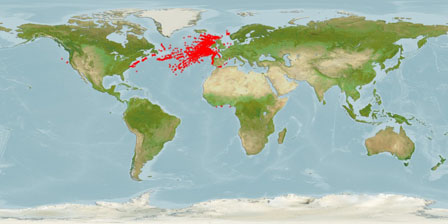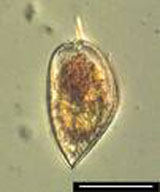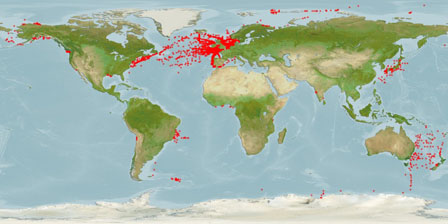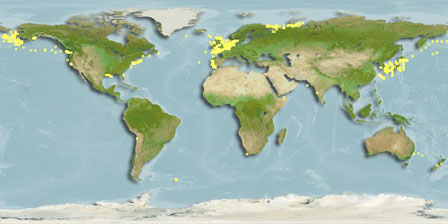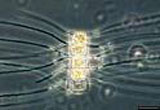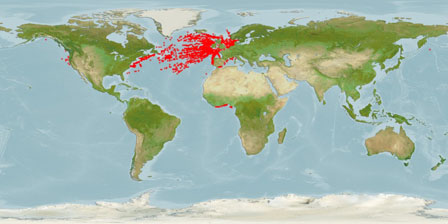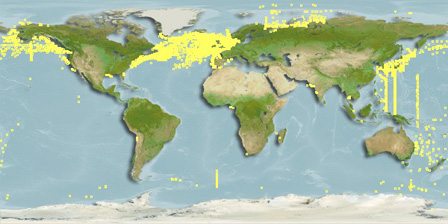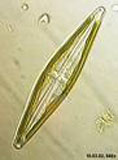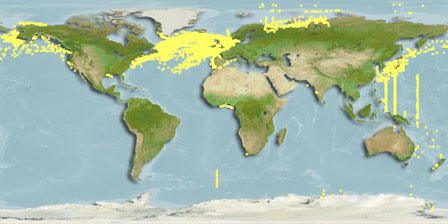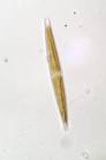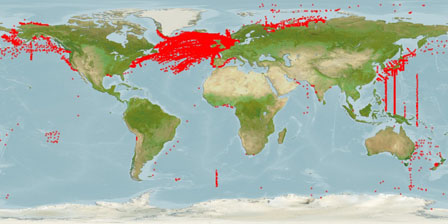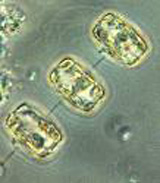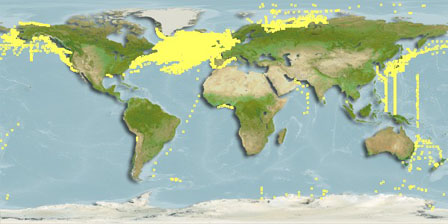Biological Interaction - OBIS
|
OBIS is an on-line system for absorbing, integrating, and assessing data about life in the oceans. OBIS is aimed at stimulating research generating new hypotheses concerning evolutionary processes and species distributions. OBIS integrates data from many sources, over a wide range of marine themes, from the poles to the equator, and from microbes to whales. OBIS, and its global network of Regional and Thematic OBIS Nodes, was created as the data integration component of the Census of Marine Life. The international portal is hosted by Rutgers University, New Jersey and sponsored by the Sloan Foundation. |
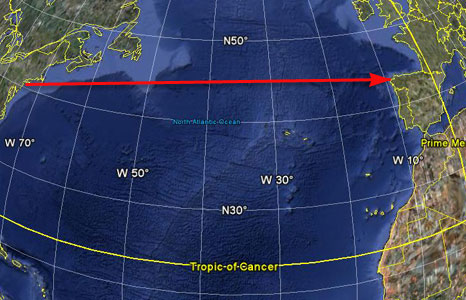 |
|
 |
     |
|
For a full list of species that may cross paths with the glider, please see below. There you will find a detailed description of each species life cycle, feeding habits, and much more. Along with each species description, there is an OBIS map to show distribution as well as a picture to gain an understanding of what each species looks like. Enjoy! | ||
SPECIES
|
Encyclopedia of Life (EOL) INFO:Balaenoptera brydei - Bryde's Whale
Brydes whale is found in the mid-Atlantic and off the coast of Africa. This species of whale is usually found alone or found within close proximity to its calf. The feeding behavior of this species is unique, and involves the whale moving forwards through a shoal of fish or krill with mouth opened wide. A vast quantity of prey and water is taken into its mouth, which is accommodated by the expandable region on the underside of the jaw. This is then squeezed back through the closed jaws of the whale, allowing water to escape through the baleen fibers, but trapping food, which is swept off by the huge, rough tongue and swallowed. Brydes whale gives rise to only a single offspring at a time, and can breed all year round only when living in more tropical waters.
Balaenoptera acutorostrata - Minke Whale
The smallest of the rorqual whales, the Minke whale is also the most abundant. Two species are now recognised, the northern hemisphere minke whale (the subject of this species page) and the southern hemisphere minke whale (Balaenoptera bonaerensis). Minke whales are slim in shape, with a pointed 'dolphin-like' head, bearing a double blow-hole. The smooth skin is dark grey above, the belly and undersides of the flippers are white, and there is often a white band on the flipper. When seen at close quarters, minke whales have variable 'smoky' patterns which have been used to photo-identify individuals.
Balaenoptera borealis - Sei Whale
Sei Whales are found worldwide, although they are only rarely found in polar or tropical waters. The difficulty of distinguishing Sei Whales at seas from their close relatives, Bryde's Whales and in some cases from Fin Whales, has created confusion about their distributional limits and frequency of occurrence, especially in warmer waters where Bryde's Whales are most common. In the North Atlantic, the range of the Sei Whale extends from southern Europe or northwestern Africa to Norway in the eastern North Atlantic, and from the southern United States to Greenland in the western. The southernmost confirmed records are strandings along the northern Gulf of Mexico and in the Greater Antilles. Throughout its range, the whale tends to avoid semi-enclosed bodies of water such as the Gulf of Mexico, the Gulf of Saint Lawrence, Hudson Bay, the North Sea, and the Mediterranean Sea. It occurs predominantly in deep water, occurring most commonly over the continental slope, in basins situated between banks, or submarine canyon areas.
Balaenoptera musculus - Blue Whale
The blue whale is the largest animal to have ever lived, almost as big as a Boeing 737, and even larger than the biggest dinosaurs. The skin is greyish blue in color with a mottled effect visible in some lights that can allow individuals to be identified. The underside, especially of whales living in polar waters, often has a yellowish tinge caused by microscopic algae (diatoms), and between 55 and 88 throat grooves run from under the chin to the navel. The blow (or spout) of this species is the biggest amongst all whales; the slender upright column of air can rise to nine meters.
Balaenoptera physalus - Fin Whale
Fin whales are the fastest of all cetaceans, reaching speeds of 37 kilometers per hour and known to completely clear the water. This whale is grey in color on the upper surface and white on the underside. The patterns on the jaw are asymmetrical, being white on the right side and dark on the left, and a large number of grooves extend along the throat to the naval. The prominent dorsal fin is 60 centimeters in length and curves strongly. Males and females tend to be very similar in their general appearance, but females are slightly longer than males. The baleen plates are bluish to grey in color and have white fringes.
Delphinapterus leucas - Beluga Whale
Beluga whales are found in northern Atlantic waters and usually come as South as the Northeastern U.S. This is a very unique looking species due to its all white body giving it the name Sea Canary. Beluga whales are social animals that can be seen gathering in estuaries in large groups. These whales tend to be very protective of their young and normally stay with their offspring for about 2 years. Although these whales are primarily surface dwellers, they can dive to depths of 1000 feet. As these whales swim into Northern waters, they tend to be primary targets for polar bears and killer whales.
Eubalaena glacialis - Northern Right Whale
The northern right whale is the most endangered of the great whales. This species received its name from whalers who considered it to be the 'right' whale to hunt; they swim slowly, float when dead and contain high quantities of oil and baleen. The northern right whale is a bulky species, black in color with patches of white on the chin and underside, and a large head relative to the body. A number of 'callosities' (thickened rough patches of skin) occur at various points on the body, and these are covered in whale lice (Cyamus spp.) so that they appear whitish yellow. These callosities tend to be larger in males than females, and on the head and jaw the pattern is unique, allowing individuals to be identified. Females are larger than males, and juveniles are usually bluish in color, becoming darker as they age. From a distance the species can be identified by the characteristic v-shaped blow, which can reach up to 5 m in height.
Hyperoodon ampullatus - North Atlantic Bottle-nosed Whale
The northern bottlenose whale has a bulbous forehead and an obvious tube-like beak, these features are more pronounced in older male individuals. The specific part of the scientific name, ampullatus, means 'flask' and refers to the bottle-like shape of the head. Young individuals are dark on the dorsal surface (back) with a light belly, and become paler as they age. In males a whitish patch develops on the forehead, which becomes larger as the male gets older. The robust body is spindle-shaped, and the dorsal fin is triangular and placed far behind centre. Northern bottlenose whales have two teeth on the lower jaw; these only erupt on males.
Kogia breviceps - Pygmy Sperm Whale
The pygmy sperm whale is found in the temperate waters of the Atlantic, Pacific, and Indian Oceans. This species is one of the smaller species of whale, but it shares some common features with its larger counterparts. Just like the Sperm Whale, the Pygmy Sperm Whale contains a sac in its intestines that releases a dark red fluid used to disorient and confuse potential predators. The Pygmy Sperm Whale has a dark grey color that gives it a purple appearance in the water. This species also has a spermaceti organ on the rostral portion of their body which resembles that of the Sperm Whale. This species feeds on crabs and fish and does not usually travel in groups.
Megaptera novaeangliae - Humpback Whale
The magnificent humpback whale is renowned for its impressive leaping displays and for the mysterious 'singing' of solitary males. The robust body is blue-black in color, with pale or white undersides. The flippers may also be white and are the largest appendage of any animal; reaching up to five metres in length. On the underside of the mouth are 12 to 36 throat grooves, which can expand when filtering water during feeding. Humpbacks have characteristically knobbly heads, covered in many raised lumps ('tubercles') and barnacles. There are two blowholes on the back and the spout of water can appear very bushy. The spreading tail flukes have a distinct indentation in the middle; as the whale undertakes a deep dive it usually arches its back (hence the common name) so that the tail flukes are raised above the water and clearly visible. The pattern on the underside of the flukes is unique and can be used to photo-identify and track individuals.
Mesoplodon bidens - North Atlantic Beaked Whale
Mesoplodon bidens is bluish grey to slate grey in color, with a lighter underside, grey and white spots may be present on the body with limited scaring. Mesoplodon bidens have a long slender beak that contains a pair of teeth midway up the lower jaw. They have a long think body, long flippers for the Mesoplodon family, and no notch in the fluke. The dorsal fin is quite small with a rounded tip and may appear falcate. Young M. bidens have a light bluish grey to white underside, more prominent than in adults. ("MarineBio.org", 2006; "Whale and Dolphin Conservation Society", 2006a; Carwardine, 2002; Clapham et al., 2002; Culik, 2003; Mottet, 2003)
Physeter catodon - Sperm Whale
The enormous (up to 1/3 of total body length), box-like head of Physeter catodon sets it apart from all other species. The blowhole slit is S-shaped and positioned on the left side of the head. There are 18-28 functional teeth on each side of the lower jaws, but the upper teeth are few, weak and nonfunctional. The lower teeth fit into sockets in the upper jaw. The gullet of Physeter catodon is the largest among cetaceans; it is in fact the only gullet large enough to swallow a human.
Ziphius cavirostris - Goose-Beaked Whale
The Goose-Beaked Whale is found in a wide range of ocean ranging from cool to temperate waters in the Atlantic, Pacific, and Indian Ocean. However, this is a very elusive species that is very rarely seen at sea making it difficult to accurately gauge total global population. Out of all know mammals, this species can dive the deepest to a depth of 1900 feet while returning to the surface every 85 minutes. Due to this, this species uses echolocation to hunt and feed at such dimly lit depths. This creature usually travels alone and its dietary intake is not well known.
Delphinus delphis - Long Beaked Saddle-Back Dolphin
The Long Beaked Saddle-Back Dolphin, also known as the Common Dolphin, is one of the smallest species known ranging anywhere between 5-8 feet long. This species contains a triangular shaped dorsal fin and color bands running the length of its body. This species is found everywhere in all the oceans except in the cold waters of the Arctic. This species is an opportunistic predator and will feed on various small fish and squids swallowing them whole. This species in particular is very social and travel in pods ranging from 1000-100000 members. This species of dolphin communicates through playful sounds and clicks. The Long-Beaked Saddle-Back Dolphin can undergo sexual reproduction twice a year to produce one calf per courtship.
Feresa attenuate - Pygmy Killer Whale
Pygmy Killer Whales are primarily found off the coast of the Eastern U.S. and off the coast of Mexico and California. This species is normally found in large pods of 12-50 individuals and are a very playful species. This species has a unique defense mechanism as when it feels threatened, all members of the pod will cluster together to make themselves look bigger in order to flee safely. Although their feeding habit is not well known, it is believed that this species prefers small fish and cephalopods.
Globicephala melas - Long-Finned Pilot Whale
The Long-finned Pilot Whale is actually a dolphin. It is jet black or dark grey with a grey or white diagonal stripe behind each eye, and a large, round forehead sometimes referred to as a melon. It is sometimes known as the pothead whale because the shape of its head reminded early whalers of black cooking pots. Long-finned Pilot Whales are very social, family animals and may travel in groups of up to a hundred, with one animal acting as leader. Long-finned Pilot Whales often strand themselves on beaches because they have strong family bonds. When one animal strands, the rest of the pod tends to follow. They are very active although adults rarely breach. Pilot whales generally take several breaths before diving for a few minutes. Feeding dives, when they are looking for squid or fish, may last over ten minutes. They are capable of diving to depths of 600 meters, but most dives are to a depth of 30-60 meters.
Grampus griseus - Risso's Dolphin
Risso's dolphin is a large, stocky species with a blunt head. They are easily recognized as they are heavily scared and become whiter with age as the number of scars increases. Calves are born with grey skin that turns chocolate brown as they age, eventually they take on the adult coloring of a grey back and white underside with darker flippers and tail. The scars are thought to be caused by the teeth of other Risso's dolphins, due to playing or fighting, however it is also thought that some of the scars are the result of squid bites. The tall, centrally positioned sickle-shaped dorsal fin is even taller and more erect in adult males than in females.
Lagenorhychus acutus - Atlantic White Sided Dolphin
The Atlantic white-sided dolphin is a large, robust species, which is easily recognized by the obvious yellow patch towards the rear of the flanks. The common name refers to the pale band on each side situated below the dorsal fin. This species is often confused with the white-beaked dolphin, but the Atlantic white-sided dolphin has a much darker back. It may also be confused with the common dolphin because of the similar pattern (grey, white, black and yellow), but it lacks the distinctive hourglass pattern.
Lagenorhychus albirostris - White Beaked Dolphin
The White-beaked Dolphin is one of the larger dolphins growing to around 2.5-2.7 meters at adulthood. The dolphin is characterized by its short thick creamy-white beak and very curved dorsal fin. The White-beaked Dolphin is common to the North Atlantic Ocean and is found in a band stretching across the ocean from Cape Cod, the mouth of the St. Lawrence River and southern Greenland in the west, around Iceland in the centre and across in the west from northern France to Svalbard. The White-beaked Dolphin is not as well adapted to Arctic conditions and may easily be misidentified as the Atlantic White-sided Dolphin. The White-beaked Dolphin is also typically larger and does not have yellow streaks on its side. The population, breeding pattern and life expectancy of the dolphin are all unknown although most sources estimate several hundred million individuals, more densely populated in the eastern North Atlantic than the west. White-beaked Dolphins are acrobatic and social animals. They will frequently ride on the bow-wave of high-speed boats and jump clear of the sea's surface. The White-beaked Dolphin is a social feeder and has frequently been observed feeding with Orca, Fin, and Humpback Whales.
Orcinus orca - Killer Whale
The orca, once also known as the killer whale, is in fact the largest of the dolphins. They are easily identified by the black and white coloration; the underside is white and there are white patches behind the eyes, and a grayish white area called a 'saddle-patch' behind the dorsal fin. The shape of the saddle is unique in each animal, and can help to identify individuals. The dorsal fin is also used to recognize individuals. Male orcas have the tallest dorsal fin known in the animal kingdom, measuring up to 6 feet high in mature males, it can be as tall as a man. Females have shorter, more curved dorsal fins.
Pseudorca crassidens - False Killer Whale
The False Killer Whale can be found in the Atlantic Ocean as well as in the Indian and Pacific Ocean. Although it is unknown as to how many total organisms make up this species worldwide, it is known that the Eastern Pacific contains the largest percentage of this species. The False Killer Whale is an aggressive predator and can and has been known to kill other whale species. This creature also targets salmon, squid, and tuna as other sources of potential prey using echolocation. This species, along with the Killer Whale, has been placed into captivity in places such as Sea World. This creature along with a dolphin have successfully mated and produced a viable offspring in captivity.
Stenella attenuate- Pantropical Spotted Dolphin
The Pantropical Spotted Dolphin is one of the most common species of dolphin found in the oceans ( second to the Bottle-nosed Dolphin). This species can typically be found in the warmer waters of the Atlantic Ocean, Gulf of Mexico, and the Pacific Ocean. The Pantropical Spotted Dolphin is sometimes found swimming amongst large pools of tuna resulting not only in a possible meal, but also resulting in protection from potential predators. The feeding habits of this species make it prone to many predators that may be lurking nearby. The Pantropical Spotted Dolphin feeds on small fish, squid, and crustaceans at the surface making them prone to shark and killer whale attacks. Not much is known about the breeding habits of this species, but it is known that the female reaches sexual maturity a few years earlier than the males.
Stenella coeruleoalba - Striped Dolphin
The Striped Dolphin is a very social species and is usually found in groups of 100-500 other dolphins. Members of these large groups communicate with each other using a variety of clicks and whistles. The Striped Dolphin is an opportunistic feeder in that it will eat when a potential meal presents itself allowing this species to have a varying diet based on its geographic location. This species primarily prefers to eat lantern fish, but it will also eat fish, crustaceans, and small cephalopods. During the mating season, a sexually mature female produces one calf every 4 years. However, the female- calf relationship is strong in that the female protects and nourishes the calf for its first 16 months.
Stenella frontalis - Atlantic Spotted Dolphin
The Atlantic Spotted Dolphin is a very acrobatic species and can usually be seen leaping out of the water playfully. Also, this species lives in pods containing up to 100 dolphins. Within the pod, there exists an organized social system that groups the dolphins into segregated groups based on sex and age. The dolphins making up these segregated groups form strong and long term bonds with each other causing them to stay together if they get separated from the larger pod. This species has also been known to associate with Bottle-nosed Dolphins in order to hunt small fish and squid. Although this species can only stay underwater for 6 minutes at a time, it is an easy target for sharks and sometimes killer whales. The gestation period of this species is slow in that a female can only produce 1 calf every 1-5 years with a 3 year refractory period between births.
Phocoena phocoena - Harbor Porpoise
The Harbor porpoise is found in coastal waters on the Eastern Seaboard of the U.S. and also on the Western Coast of Europe. This species is found either alone or in groups ranging from 3-7 porpoises. This species is very protective of its young and many parent- child interactions can be seen especially during migratory periods. This species uses the phenomenon sonar as its method of orienting their bodies. The Harbor porpoise feeds on pelagic fish species and it must eat 10% of its body weight daily.
Tursiops truncatus - Bottle Nosed Dolphin
The bottlenose dolphin is one of the most well-known species of dolphin. There appear to be two main varieties; a smaller, inshore form and a larger, more robust form that lives mainly offshore. This stocky species has a torpedo-shaped body, a short beak and pointed flippers. They are usually dark grey on the back with paler grey flanks and a white or pinkish belly. The sickle-shaped dorsal fin is tall, and positioned centrally on the back; variations in the shape of the dorsal fin along with scars and other markings on the skin can help researchers to identify individuals.
Caretta caretta - Loggerhead Sea Turtle
The loggerhead is one of the most widespread of all the marine turtles and also the most highly migratory, with individuals known to cross the Atlantic and Pacific Oceans. This turtle's common name comes from its relatively large head, which contains powerful jaws. The carapace of the adult turtle is a reddish-brown color, whilst the underneath (or plastron) is more yellow in appearance.
Chelonia mydas - Green Sea Turtle
Green turtles are one of the largest and most widespread of all the marine turtles. The oval carapace varies from olive to brown, grey and black with swirls and irregular patters, but the common name is derived from the green colour of the fat and connective tissues of this species. Two subspecies are currently recognised; the Pacific green turtle (Chelonia mydas agassizii) tends to be smaller than its Atlantic cousin (C. m. mydas) with a narrower carapace that may sometimes be completely black, providing the other common name of 'black turtle' to certain populations. The plastron, or undershell, remains a pale yellow or orange throughout life. Males are generally smaller than females, and green turtles differ in appearance from other marine turtles by the possession of a single pair of scales in front of the eyes and a serrated bottom jaw. The tiny black hatchlings are only around 50 millimetres long.
Dermochelys coriacea - Leatherback Sea Turtle
The leatherback is the world's largest turtle; the largest recorded individual weighed a massive 916 kilograms. This turtle earned its common name because it lacks the typical bony plates on its carapace. Instead, its shell is flexible and covered in a thin layer of leathery skin. This turtle is dark in colour with white and pink spots. Leatherbacks are easily recognisable by the seven narrow ridges running the length of the carapace, and by their particularly large front flippers. Females also have a characteristic 'pink spot' on the top of their heads.
Lepidochelys kempii - Atlantic Ridley
The Atlantic Ridley is a marine turtle that comes ashore in large masses to lay its eggs in the sand. Each female lays around 90 eggs at a time and it usually lays its eggs during the day. This species is found along the Eastern Coast of the U.S. The mature adults are carnivorous bottom feeders that eat a variety of different species ranging from jellyfish, crabs, and fish.
Alosa aestivalis - Blueback Herring
Form schools and possibly wintering near the bottom and out from the coast, approaching the shore in the late spring. Feed on small fishes, copepods and small shrimps. Spawn in brackish- or freshwaters of rivers, arriving in coastal waters a month or so later than A. pseudoharengus (in April at Chesapeake Bay, apparently when the water is above 70° C and later further north). Eggs are essentially pelagic, demersal in still water (Ref. 4639). Larvae are found in fresh and brackish rivers (Ref. 4639). Juveniles leave fresh and brackish nursery grounds at about 5 cm, migrating downstream (Ref. 4639). Marketed mostly fresh and salted (Ref. 188). Parasites found are acanthocephalan and nematodes (Ref. 37032).
Alosa sapidissima - American Shad
The American Shad spends most of its life at sea, but swims up fresh rivers to spawn. Unlike salmon, the fish survive breeding and can return to the sea. At sea, shad are schooling fish; thousands are often seen at the surface in spring, summer, and autumn. Like other herrings, the American Shad is primarily a plankton feeder, but will eat small shrimp and fish eggs. The fish select sandy or pebbly shallows for spawning grounds, and deposit their eggs mostly between sundown and midnight. Females release eggs in batches and produce about 30,000 eggs per batch, though as many as 156,000 have been estimated in very large fish. Total annual egg production is 200,000 - 600,000 eggs per female with larger fish producing more. The eggs are transparent, pale pink or amber, and being semi-buoyant and not sticky like those of other river herrings, they roll about on the bottom with the current. The young shad remain in the rivers until fall, when they move down to salt water resembling their parents in appearance.
Brosme brosme - Cusk
The Cusk is a Northern Atlantic fish species that has become a more common site in southern waters, especially off the coast of New Jersey. This fish is easily distinguished amongst other fish due to the presence of only one dorsal fin. This species is primarily benthic dwelling and is a sluggish swimmer. Because it is such a weak swimmer, it feasts on slow moving crustaceans and anything else it can manage to catch. This species is targeted by humans as a food source, and is primarily fished for by fishermen of northern territories.
Clupea harengus - Atlantic Herring
Atlantic herring is one of the most abundant species of fish on the planet. They can be found on both sides of the Atlantic Ocean congregating together in large schools. They feed on copepods, krill and small fish, and their natural predators are seals, whales, cod and other larger fish. This species is a primary target by many fishermen as well. The Atlantic Herring fishery has long been an important part of the economy of New England and the Canadian Maritime provinces. This is because the fish congregate relatively near to the coast in massive schools, notably in the cold waters of the semi-enclosed Gulf of Maine and Gulf of St. Lawrence. North Atlantic herring schools have been measured up to 4 cubic kilometers in size containing an estimated 4 billion fish.
Coryphaena hipparus - Mahi Mahi
Mahi Mahi is pelagic ray finned fish that also bears the nickname dolphin fish. This species of fish is found world-wide in tropical and temperate waters making it a popular sport fish. Mahi Mahi is one of the fastest growing fish species, and is generally easily recognizable by its bright coloration. When this species is removed from the water, its body changes color giving it a yellow appearance. Mahi Mahi are carnivorous fish that will readily attack other fish and crustaceans.
Echeneis naucrates - Sharksucker
The Sharksucker is the most abundant remora species found in warm water. Sharksuckers can be seen swimming freely in shallow coastal waters of the Atlantic, but it primarily is seen attached to its host species: sharks, rays, bony fish, sea turtles, whales and dolphins. This species feeds primarily on its hosts parasites, but also on small fish and bits of its hosts prey. Live Sharksuckers were used by native tribes for fishing by tying a line around the tail fin. The Sharksucker would then attach to its host, and then the fishermen would pull in the Sharksucker and its attached host.
Gadus morhua - Atlantic Cod
Atlantic Cod is one of the most overfished species in the Atlantic and was almost driven to extinction in the early 1990s. Like the herring, there are various races of cod, which differ in their growth rates, distribution and times of spawning. Most cod spawn between the months of January and April and a female, if she is large enough, can release up to five million eggs. Depending on the temperature, the eggs hatch in two to four weeks and the young cod drift in the open ocean, feeding on small crustaceans. Atlantic cod will eat a wide variety of prey, ranging from other fish to worms, swimming crabs, shrimps and prawns. The different races of this fish vary in the ages and weights attained before they become sexually mature. The migratory cod found off the coasts of Newfoundland, Iceland and Norway mature at around eight to 12 years old when they may weigh up to eight kilograms. Coastal cod mature more rapidly and may be able to reproduce at the age of three years.
Makaira nigricans - Atlantic Blue Marlin
The Atlantic Blue Marlin is a species of marlin that is endemic to the Atlantic Ocean. It is a predator that feeds on a wide variety of organisms near the surface. By using its bill, it can slash while swimming through schools of fish, and then return to eat the stunned or dead prey. It is highly sought as a game fish to be caught by the means of hook and line and has commercial value because its meat has a relatively high fat content. Atlantic blue marlin is distributed in the tropical and temperate waters of the Atlantic and is more populous in the western part. It is a blue water fish that spends the majority of its life far away from land in the open sea. Females grow much larger than males, up to four times as heavy, and can exceed 540 kilograms (1,200 lb) in weight. The number of predators for the Atlantic blue marlin is limited, but the Great White Shark and Short-finned Mako Shark have been known to attack the Atlantic Blue Marlin.
Mola mola - Ocean Sunfish
The ocean sunfish, or common Mola, is the heaviest known bony fish in the world. It has an average adult weight of 1,000 kg (2,200 lb). The species is native to tropical and temperate waters around the globe, but has become a threatened species. Ocean Sunfish resemble a fish head with a tail and a laterally flattened body. Sunfish can be as tall as they are long when their dorsal and ventral fins are extended. Ocean Sunfish live on a diet that consists mainly of jellyfish, but because this diet is nutritionally poor, they consume large amounts in order to develop and maintain their great bulk. Females of the species can produce more eggs than any other known vertebrate species. Adult sunfish are vulnerable to few natural predators, but sea lions, orcas and sharks will consume them. Among humans, sunfish are considered a delicacy in some parts of the world, including Japan, the Korean peninsula and Taiwan, but sale of their flesh is banned in the European Union. Ocean Sunfish are frequently, though accidentally, caught in gillnets, and are also vulnerable to harm or death from encounters with floating trash, such as plastic bags.
Myxine glutinosa - Common Hagfish
The Common Hagfish found primarily in the Atlantic and carries the reputation of being one of the most disgusting sea creatures known to man. The Common Hagfish has two very unique abilities that allow it to escape from predators. This creature expels massive quantities of mucous when it feels endangered causing the water around it to become more viscous. This expulsion of mucous creates a distraction for the predator allowing the hagfish to escape. Also, if the hagfish is in the grasps of a predator, it will excrete mucous while simultaneously tying itself in a knot from head to tail. It will the then unravel itself escape. Hagfish are hermaphroditic species that are capable of reproducing asexual due to the presence of male and female gonads. The feeding method of the species is also very unique as it resembles the way in which leeches feed. This is one of the most interesting species of creatures, but it is still classified as a fish.
Petromyzon marinus - Great Sea Lamprey
The Sea Lamprey is a parasitic jawless fish that is found in shallow waters just offshore in the Atlantic and in many large inland lakes. When lampreys are born, they are blind, filter feeders that live in lakes and streams. However, they migrate into the ocean when they have successfully undergone a metamorphosis into their parasitic form. During their parasitic life, they attack and feast on the tissue of many fish until they have reached a certain length. When this happens, they stop feeding and eventually make their way back into lacks and rivers where they spawn.
Pomatomus saltatrix - Bluefish
Bluefish are a migratory fish species found primarily in the Western Atlantic Ocean as well in the Mediterranean Sea. The Bluefish is a voracious and aggressive predator that kills for the sake of killing. These fish have mistakenly attacked humans as they followed smaller fish into shallower waters. It is also believed that these fish are cannibalistic in the sense that they will eat other bluefish. If this fish is to be handled, it must be done with caution because this fish will not be afraid to bite.
Rachycentron canadum - Cobia
Cobia is a pelagic species of fish that are primarily thought of as a sport fish. Many recreational fishermen take much pleasure in catching this particular species. Cobia will eat primarily crabs and squid and sometimes follow sharks and other fish in hopes of scavenging a meal. This species is very curious in the sense that it does not fear the sight of boats or other potential threats. Many sharks target this species as prey due to its dwellings near the surface of the water. This fish species is a common sight at most fish farms
Remora remora - Remora
Remora Remora is a common pelagic fish that differs from other remoras because of its highly modified dorsal fin. The dorsal fin of this species provides the necessary suction allowing it to attach tightly and efficiently to its host. This adaptation allows Remora remora to engage in a symbiotic relationship with its host due to the fact that as the remora cleans its host, it is feeding. This means that the remora does not have a negative effect on its host. Remora rely on its host for transportation because remora itself is a poor swimmer. Remora will die in still water because respiration will stop if water is not moving over the gills.
Salmo salar - Atlantic Salmon
The Atlantic Salmon, also known as the "king of fish", is found in the Northern Atlantic Ocean as well as in coastal rivers connecting to the Northern Atlantic. Atlantic Salmon do not need saltwater to survive and follow an anadromous migration pattern meaning that they undergo majority of growth and feeding in salt water, but return to fresh water to spawn. The female Atlantic Salmon will migrate upstream to lay thousands of eggs in the gravel river beds. Newly hatched salmon continue to feed off of the nutrients from their yolk sac until they have developed enough to hunt small prey. Eventually, they grow enough to make the long treck into the Atlantic Ocean. This is a very dangerous time as they are the prey of many larger fish as well as humans. When these fish make it into the Atlantic Ocean, they become aggressive hunters and will attack squid, eels, amphipods, and even other salmon. A social hierarchy has not been confirmed, but it could explain the aggression these fish have towards others members of the species
Scomber scombrus - Atlantic Mackerel
Adult Atlantic mackerels form schools close to the surface. They have to swim constantly as they 'breathe' by a method known as ram ventilation, which requires a constant flow of water across the gill surfaces. They are active mainly in the day, and feed on small fishes as well as small crustaceans, which are filtered from the water. They spend the winter in deep water, and stop feeding at this time until they migrate closer to shore during spring. During spawning, eggs and sperm are released into the sea. Both the eggs and larvae are pelagic because the eggs have a globule of oil which keeps them afloat in the surface waters. This is a long-lived species; the maximum recorded lifespan in the North Sea is 25 years.
Thunnus alalunga - Albacore Tuna
Albacore tuna is the only tuna species that can be marketed as "white meat tuna" in the United States. Albacore tuna can be found in all tropical and temperate oceans as well as in the Mediterranean Sea. This species is one of the most targeted and prized food sources in the ocean making it very economically significant in certain regions. Albacore tuna tend to accumulate high mercury concentrations rather quickly and it increases with age. As a rule of thumb for fishermen, the longer the line an Albacore tuna is caught on, the older it is; therefore, the greater the concentration of mercury. In other places around the world, excluding the United States, Yellowfin Tuna, Blackfin Tuna, Kawakawa, and Yellowtail Amberjack are all accepted as albacore.
Torpedo nobiliana - Atlantic New British Torpedo
The Atlantic New British Torpedo is a unique looking fish that takes on a flattened appearance. This species has a wide distribution but is primarily found in the tropical and temperate waters of the Atlantic. This creature prefers benthic environments far from the waters surface. This creature is also equipped with electrical organs that function in stunning their prey. It is assumed that this creature preys on small fish. The female is viviparous and produces offspring without a placenta. Other information regarding behavior is currently unknown.
Urophycis chuss - Red Hake
The Red Hake is a popular game fish found in the Atlantic as far South as Delaware and as North as the Gulf of Maine. The Red Hake is found primarily on soft, muddy, or sandy sea bottoms. Juveniles spend much time close to the coast, but the adults migrate in deeper open waters. Juvenile members of the species feed primarily on scallops until adulthood when they feast on various types of fish, shrimp and squid. This fish is important to humans in that it is used in the production of fishmeal.
Alopias superciliosus - Bigeye Thresher Shark
The Bigeye Thresher Shark is predominantly a pelagic shark species meaning that it prefers open water far from shore. This species can be found in temperate and tropical oceans where it hunts sardines, anchovies, mackerel, and squid nocturnally. This shark has a uniquely shaped caudal fin that can be used to stun prey before the attack. This shark is physiologically adapted for open water environments due to large axial muscles. These muscles contribute to endurance and longer contractions. These sharks are ovoviviparous meaning that they give birth to live young that develop in weak shells inside the female.
Alopias vulpinus - Thin-tailed Thresher Shark
Although this species is predominantly found off the coast of Australia, it has been found in the Atlantic off the coast of the Eastern U.S. This shark is also known as the common thresher and it is the biggest of the thresher species ranging between 7-16 feet long. This shark, along with the Bigeye Thresher, are easily recognized due to its caudal fin that is half the length of its body. Not much else is known about this shark species at the time.
Amblyraja radiata - Starry Ray
The Starry Ray is distinguished from other skates found in the North Atlantic Ocean by the large thorns that run along the midline of the back from the nape to the first dorsal fin. The tail is also unique in that it has a maximum of 10 large thorns. The snout of the Starry ray is blunt at the tip and the margins bulge a little just behind the eyes. The dorsal fins can sometimes be joined at the base while other times they are separated by a short space. Sexually mature males have conspicuously strong claspers that reach about halfway down the tail. The teeth of the Starry Ray consist of about 36 to 46 series of teeth with round bases on each jaw plate. Mature males seem to have slightly sharper teeth that tend to be more widely spaced. The Starry Ray is found in marine and brackish waters near the ocean floor on a variety of substrates including sand, broken shells , gravel , pebbles , and soft mud. They are cool water fish that live in waters ranging from 30°F to 57°F, and have been found at depths of 20 to 1000 meters.
Prionace glauca - Blue Shark
The Blue Shark is found in the deep waters of the world's temperate and tropical oceans, but they prefer cooler waters. Blue sharks are known to migrate long distances, and they are capable of moving very quickly if the need arises. Blue sharks are viviparous and are noted for their large litters of 25 to over 100 pups. They feed primarily on small fish and squid, although they are perfectly capable of taking larger prey should the opportunity present itself. This species may not pose considerable danger to humans. They are often found in schools segregated by sex and size, and this behavior has led to their being nicknamed the "wolves of the sea". Blue Sharks are the most highly sought species of shark because its flesh is edible and its skin is used to produce leather. This shark is considered a dangerous species but as of 2008, only 4 fatal attacks have been recorded. This shark is primarily an open water species making it very difficult to survive in captivity.
Carcharhinus obscures - Dusky Shark
The Dusky Shark is found in tropical and warm-temperate continental seas worldwide. This species is an apex predator that can be found from the coast to the outer continental shelf and adjacent pelagic waters. Populations of this species migrate seasonally towards the poles in the summer and towards the equator in the winter, traveling hundreds to thousands of kilometers. Adult dusky sharks have a broad and varied diet, consisting mostly of bony fishes, sharks and rays, and cephalopods, but also occasionally crustaceans, sea stars, bryozoans, sea turtles, marine mammals, and garbage. This species is viviparous with a three-year reproductive cycle allowing females to store sperm for long periods as their encounters with suitable mates may be few and far between due to their nomadic lifestyle and low overall abundance. Because of its slow reproductive rate, the dusky shark is very vulnerable to human-caused population depletion. This species is highly valued by commercial fisheries for its fins, used in shark fin soup, and for its meat, skin, and liver oil. The World Conservation Union has assessed this species as Near Threatened worldwide and Vulnerable off the eastern United States. The dusky shark is regarded as potentially dangerous to humans due to its large size, but there are few attacks attributable to it.
Carcharhinus plumbeus - Sandbar Shark
The Sandbar shark spends the majority of its time near the sea bottom, where it patrols continuously for prey, such as small bottom-dwelling fishes, mollusks. Despite its size and large triangular teeth, the Sandbar shark has never been blamed for attacks on humans, preferring instead to stick to its live fish. The Sandbar Shark is viviparous, giving birth to between 1 and 14 pups in each litter. The size of the litter varies depending on the size of the mother, with large females giving birth to larger litters. Pregnancy is estimated to last from 8 to 12 months, and appears to differ between geographical locations. The time of year in which the pups are born also varies slightly, but all females move inshore to shallow nursery areas to give birth. The females leave these coastal areas soon after giving birth, while the young remain in the nursery grounds until winter, when they move into warmer and deeper water. A common feature of sharks is their slow growth rate and low reproductive output. Females give birth every other year at most causing populations of sandbar sharks to become segregated by age 6.
Carcharias taurus - Grey Nurse Shark
The Grey Nurse Shark, also known as the Sand Tiger Shark, is one of the best-studied of the shark species. They are the only sharks known to gulp air at the surface and store it in their stomach to provide buoyancy. These sharks generally mate between October and November and courtship can take a long time with the male aggressively nipping his potential mate. Females are ovoviviparous giving birth to two large pups every two years. Pups hatch out of their eggs within the oviduct of the mother's reproductive system, one in each oviduct, and then feed on eggs that the female continues to produce. Over nine months to a year, the pups grow within their mother feeding on hundreds to thousands of eggs and by the time they are born, they measure up to a meter long. During the day they are found near caves and ledges, hovering just above the surface either singly or in small groups. These fairly docile sharks are sluggish and, despite a ferocious reputation, feed mainly on fish.
Carcharodon carcharias - Great White Shark
The great white shark, also known as white death, is an exceptionally large shark found in coastal surface waters in all major oceans. Reaching lengths of more than 6 meters (20 ft) and weighing up to 5000 lbs, the great white shark is arguably the world's largest known predatory fish. It is the only surviving species of its genus, Carcharodon. Research suggests that the Great White Shark is most closely related to the Mako Shark. Great white sharks, like all other sharks, have an extra sense given by the Ampullae of Lorenzini, which enables them to detect the electromagnetic field emitted by the movement of living animals. Every time a living creature moves it generates an electrical field and great whites are so sensitive they can detect half a billionth of a volt. Great White Sharks are considered apex predators although pods of dolphins can kill a Great White with by ramming it multiple times. Great White Sharks are responsible for the most attacks on humans, but researchers believe that these sharks attack out of mistaken identity confusing humans with seals.
Cetorhinus maximus - Basking Shark
The Basking Shark is primarily found in the Atlantic Ocean and has also been seen in waters around Northern Europe. Very little information is known about the natural ecology and behavior of the basking shark. It receives its common name from its feeding behavior, when individuals appear to be 'basking' on the water's surface, swimming very slowly with their entire dorsal fin out of the water. These sharks feed passively merely by swimming through the water with their mouths gaping. As water passes over the gills, plankton is retained in huge amounts. These giant fish have occasionally been observed leaping out of the water, which is probably related to social behavior. Basking sharks are usually solitary, although pairs and groups of up to 100 individuals have been seen. It is also thought that during this time of low food availability basking sharks shed and then replace the gill rakers. The only pregnant female ever caught gave birth to six live young, but it is thought that these sharks are ovoviviparous, and it is likely that they only give birth every two to four years.
Dasyatis americana - Southern Stingray
The Southern Atlantic Stingray is an active swimmer that feeds primarily at night, on a diet of invertebrates and small fishes. They feed by flapping their wing-like fins to disturb the sand, and expose their prey. This bottom-dwelling species is often found singly or in pairs, except in the summer months when it migrates in schools. Very little is known about the natural mating behavior and reproductive biology of the southern stingray. Mating stingrays are rarely encountered in the wild, but it is thought that southern stingrays have multiple mates, as a female was observed mating with two males in quick succession. The southern stingray is ovoviviparous, a method of reproduction in which the egg develops within the female's brood chamber. The pups hatch from their egg capsules inside the mother, and are born soon afterwards.
Etmopterus gracilispinis - Broadbanded Lantern Shark
The Broadbanded Lantern Shark is primarily found in the Atlantic Ocean around the continental shelf. This species of shark is becoming less common as a result of the constantly changing ocean. This shark feeds on small fish, crustaceans, and small cephalopods. The Broadbanded Lantern Shark is also equipped with 2 dorsal spines as a means of self-defense. Not much else is know about this species due to its elusive nature.
Galeocerdo cuvier - Tiger Shark
The tiger shark is a species of requiem shark found in many of the tropical and temperate regions of the world's oceans, and is especially common around islands in the central Pacific. This shark is a solitary hunter, usually hunting at night. Its name is derived from the dark stripes down its body, which fade as the shark matures. The tiger shark is a predator, known for eating a wide range of items such as fish, seals, birds, smaller sharks, squid, turtles, and dolphins. It has sometimes been found with man-made waste such as license plates or pieces of old tires in its digestive tract and is often referred to as "the wastebasket of the sea". These sharks are often large in size and may encounter humans because they often visit shallow reefs, harbors and canals. Second only to the great white shark in number of recorded attacks on humans, the tiger shark is considered, along with the great white, bull shark and the oceanic whitetip shark to be one of the sharks most dangerous to humans. This may be due to its aggressive nature and frequency of human contact as it often inhabits populated waters.
Leucoraja ocellata - Winter Big Skate
The Winter Big Skate is a gentle ray species that prefers offshore shoals for their habitat. These rays eat primarily small fish and are usually active under nocturnal conditions only. This creature lays multiple eggs at a time that have horns on them so that they can implant into the sand on the ocean floor. When the young hatch, they tend to follow large swimming objects resembling the mother.
Manta birostris - Atlantic Manta
Manta rays are generally solitary, although loose aggregations of individuals may occur where there are abundant food sources or during the breeding season. When ready to mate, a male will bite his mate's pectoral fin to position himself belly-belly for copulation. The developing eggs remain inside the female's body for possibly as long as 12 months and hatch internally so that she gives birth to live young because these creatures are ovoviviparous. The average litter size is two pups, and there is often a two year gap between births. These rays feed on plankton through filter feeding. Individuals have been observed swimming in slow vertical loops whilst feeding, possibly in an effort to concentrate prey items. Mantas are often host to remoras, which attach to the underside of the larger fish and consume particles of food that fall from the mouth. Individuals have also been observed to jump (or 'breach') clear out of the water, possibly in a form of communication or play.
Mustelus canis - Atlantic Smooth Dogfish
The Atlantic Smooth Dogfish is one of the more gentle species of shark that is commonly found close to shore in the Atlantic Ocean. This species is primarily a scavenger but can also become a predator if the opportunity arises. This shark species also serves a use to humans. Humans use this shark as a food source and also as specimens for dissection in biology labs.
Myliobatis freminvillii - Bullnose Ray
The Bullnose Ray is a species of eagle ray that is found along the entire eastern coast of the United States. This species lives in a wide range of depths and has been recorded at depths between 390-3700 feet. This creature gets its name from its snout that curves downward resembling that of a duck bill. This species feasts on benthic or deep dwelling mollusks and crustaceans. Reproduction, like most of the other ray species, is ovoviviparous in which live young are born after hatching from an egg internally.
Pteroplatytrygon violacea - Pelagic Stingray
The Pelagic Stingray is the only species of rays that prefers to live in the open ocean rather than the ocean floor. This species is an active predator that feeds on fish, crustaceans, squids, and jellyfish. Because this species is prefers open water, it can be found close to the surface of the water making it an easy target for Great White Sharks. Aside from attracting sharks, this species also attracts oceanic parasites. Reproduction is also rather unique because this species is ovoviviparous meaning that the offspring are hatched from eggs inside the female before being born.
Rhincodon typus - Whale Shark
Whale sharks are usually solitary, but loose groups of up to 100 individuals have been sighted, often when they are feeding. These sharks appear to be highly migratory, and have been tracked for thousands of kilometers. However, it is not clear whether movements across deep ocean basins follow prey routes or are undertaken for other reasons. Very little is known about the reproduction of the Whale shark, but in 1995, one pregnant female was captured who contained nearly 300 fetuses. The species is ovoviviparous meaning the young hatch from eggs retained within the mother so that she then gives birth to live young. Whale sharks are fairly docile creatures and feed on planktonic organisms and small fish by suction filter-feeding by actively sucking food in through their vast mouths and passing the water over the gill arches, where prey are retained and then swallowed. They have also been observed actively swimming through shoals of fish with their mouth agape or hanging vertically in the water and drawing food into their mouths.
Rhinochimaera atlantica - Atlantic Knife-nosed Chimaera
The Atlantic knife-nosed chimaera is an open water species that usually prefers a habitat on the continental shelves off the coasts of the USA, Canada, Spain, and Africa. This animal is not well known because it is has become an endangered species due to increasing habitat loss. This creature has also been known to lay spine covered eggs.
Rhinoptera bonasus - Cownose Ray
The Cownose Ray is sometimes found in extremely large groups, with schools of up to 500 rays having been reported. Because of these conglomerations, fishermen tend to find this species a nuisance. This species feeds on oysters and crustaceans and it uses its large plate-like teeth to crush the shells of its prey. Reproduction is ovoviviparous, with live young being 'born' after they have hatched inside the female.
Rhizoprionodon terraenovae - Atlantic Sharpnose Shark
The Atlantic Sharpnose Shark is primarily found in the Continental Shelf in the Atlantic Ocean. Details about this shark are very limited as not much information is known about this shark. This shark normally tends to feed on shrimp, small fish, worms, and small gastropods. The female gives birth to 1-7 offspring at a time and does so without the presence of a placenta (viviparous).
Scyliorhinus retifer - Chain Catshark
The Chain Catshark is a rare shark species that is rather elusive to humans in wild. It is found primarily in the Atlantic Ocean. This shark species is characterized the emission of fluorescence from its body; however, the reason for this is unknown. The Catshark spends most of its time on the ocean floor where it buries itself in the sand to hide itself from predators. When this species is ready to mate, the male bites the female in order to position itself for efficient copulation. After copulation, the male releases the female and they both swim away.
Sphyrna zygaena - Common Hammerhead Shark
The Hammer Head Shark is found in the Atlantic Ocean as well as off the coast of Southern Africa and Australia. These sharks usually gather in groups in shallow water in order to hunt. These sharks have specialized electroreceptors in the corners of their snout to allow for more effective detection of prey. Hammerhead sharks undergo violent courtship once a year which produces 30-50 pups at a time. Aside from the shape of this creatures head, there is another unique characteristic that this shark possesses. This creature is the only shark species that is capable of getting a tan.
Acanthohaustorius millsi
Acanthohaustorius millsi is a species of amphipod that resembles shrimp-like crustaceans. This particular species prefers deep water, or benthic, habitats. At these depths, it serves as a primary food source for filter feeders such as Grey Whales. Further information is limited at this time.
Aeginina longicornis - Long-horned Skeleton Shrimp
The Long-horn skeleton shrimp is a species of amphipods that prefer cooler water. They can be found in the waters of the Northern Atlantic as well as off the coast of Western Norway. This species has also been found as far South as North Carolina. This particular species is a deposit feeder on various types of algae and other microorganisms.
Ampelisca abdita
Ampelisca abdita is a species of amphipod found in the Northwestern Atlantic Ocean as well as off the coast of the United States. This species is found in majority of coastal waters in the Atlantic.
Ampithoe valida
Ampithoe valida is a species of amphipods that are found grazing on rocky and muddy bottoms. This species is usually found in the presence of microalgae and prefers environments where salinity concentrations are above normal.
Argissa hamatipes
Argissa hamatipes is a species of amphipods found in Northern Atlantic waters. It can be found as far North as Labrador and as far South as Cape Cod. This species is classified as a deposit feeder and prefers habitats between 5-100 meters with rocky and sandy bottoms.
Byblis serrata
Byblis serrata is a species of amphipods found in the coastal waters off the Eastern United States. Its distribution ranges from as North as Cape Cod and as South as Virginia.
Caprella penantis
Caprella penantis is a common species of amphipods. Members of this species are commonly referred to as skeleton shrimp due to their long cylindrical body. This species contains 2 large antennae and hooks at the ends of its appendages.
Corophium acherusicum
Corophium acherusicum is a species of amphipods that are found in coastal waters of the Atlantic Ocean. These creatures are both deposit feeders as well as suspension feeders. Further information is currently unavailable.
Corophium lacustre
Corophium lacustre lives in nearly fresh water and it is white and up to 6 mm long. It occurs mainly on the Atlantic coast of North America, the North Sea and the Baltic.
Elasmopus laevis
Elasmopus leavis is an amphipod species that prefers shallow habitats off the coast of the US from Cape Cod to Virginia. It is a primary prey item for many filter feeding species; however, more information is limited at this time.
Harpinia propinqua
Harpinia propinqua is a species of amphipod that can be found in estuaries and in coastal waters in the Atlantic Ocean. It primarily feeds as a deposit feeder, but sometimes it can also be a surface grazer.
Lepas - Goose Barnacle
Goose barnacles, also called stalked barnacles or gooseneck barnacles, are filter-feeding crustaceans that live attached to hard surfaces of rocks or ocean debris in the ocean intertidal zone. Some species of goose barnacles are pelagic and are most frequently found on sunken ships near oceanic coasts. Unlike most other types of barnacles, intertidal goose barnacles depend on water motion for feeding; therefore, these barnacles are found only on exposed or moderately exposed coasts. In some European countries, Goose Barnacles are condsidered a delicacy while other countries values the Goose Barnacle as a main import item. The Goose Barnacle was also believed to have evolved into the common species Barnacle Goose in the 12th Century. This confusion arose from the similar coloration of the two entirely different creatures as the lack knowledge in regards to bird migration.
Conchoderma virgatum
Conchoderma virgatum is a species of barnacle that is found primarily in the temperate European waters of the Atlantic Ocean. This species has been found attached to the bottom of boats, deepsea wiring, floating objects, moonfish, whales, sea snakes, and eels. Conchoderma virgatum is also sometimes found in the same location as Goose Barnacles. This species has unique purple and brown coloration that makes it very distinguishable. As most species of barnacles, Conchoderma virgatum relies solely on cirri, which are tiny cillia that direct food into the mouth, for feeding.
Balanus
Balanus is a genus of barnacle that is widely distributed across the Atlantic Ocean. Most species are primarily coastal preffering tidal pools and shallow water. On the contrary, other species of this genus are attracted to bio-fouling that may be present on hard surfaces of debris, sea vessels, and the surfaces of oysters, whales, and many other sea creatures. All species of this genus use cirri, a cillia-like mechanism that direct food into the mouth, to feed. .
Pleuromamma robusta
Pleuromamma robusta is a species of calanoid copepod that measure 3 mm in length full grown. Calanoid copepods are small planktonic crustaceans that form one of the major links of the marine food web. Their antennae are covered with an array of hairs or "setae" which give the animals a method of detecting sensation. Indeed, sensory detection through fluid movements and odors appears to be the primary function of these structures. These copepods usually hold their long antennae out from their heads, forming a "T" and positioning their sensory setae in ideal locations. Planktonic copepods also use their antennae, which have muscle nearly to the tips, to act in their spectacularly fast escape response.
Homarus americanus - American Lobster
The American lobster is a species of lobster found on the Atlantic coast of North America. Within North America, it is also known as the northern lobster, Atlantic lobster or Maine lobster. It thrives in cold and shallow waters where there are many rocks and other places to hide from predators. The American Lobster is both solitary and nocturnal while it feeds on fish, small crustaceans, and mollusks. This species of lobster is found as far south as North Carolina, and are famously associated with the colder waters around the Canadian Maritimes, Newfoundland and Labrador, Maine, Massachusetts, and New Hampshire. They commonly range from 20 cm to 60 cm in length and ½ kg to 4 kg in weight, but have been known to reach lengths of well over 1 m. An average adult is about 9 inches long and weighs 1½ to 2 pounds. The adult American lobster's main natural predator is the codfish, but other enemies include haddock, flounder, and other lobsters. Overfishing of cod in the early 20th century has allowed the lobster population to grow enormously.
Homarus gammarus - European Lobster
The European Lobster is a large species of decapod that lives in the Eastern Atlantic off of the coast of Europe. This species ranges as far North and Norway, and as far South as the Azores and Spain. The European Lobster is rarely found deeper than 50 meters deep and prefers to live in or around muddy habitats. Like most lobster species, the European Lobster is a solitary, nocturnal hunter. This species seeks mates during the summer months and the female will carry the eggs up to 11 months until they hatch. When the eggs hatch, the young larvae embed themselves in the sandy bottom where they remain for 2 years in order to finish development. The European Lobster feeds on any sea-bottom invertebrate, and the rate of feeding increases as water temperature increase due to the increased metabolic rated.
Crangon crangon - Common Shrimp
Common shrimp, also known as brown shrimp and sand shrimp, is a commercially important species of shrimp fished mainly in the southern North Sea as well as off the coast of Western Europe. Adults are typically 3050 mm (1.252 inches) long, although individuals up to 90 mm have been recorded. The animals have cryptic coloration, being a sandy brown color, which can be changed to match the environment. They live in shallow water, which can also be slightly brackish, and feed nocturnally. During the day, they remain buried in the sand to escape predatory birds and fish, with only their antennae protruding. The Common Shrimp is by far the most sought after decapod for consumption due to its very unique taste. Over 37,000 tons of Crangon crangon were caught in 1999, with Germany and the Netherlands taking over 80% of this total.
Palaemon serratus - Common Prawn
The Common Prawn is a species of shrimp that lives in the Atlantic Ocean spanning along the West coast of Europe as well as Northwest Africa. Members of this species have a life span of 4-5 years and prefer a rocky habitat around a depth of 40 meters. This species prefers the rocky habitat not only as a place to live but also a place to hide from the many predators that prey upon this species. This species differs from other shrimp species due to its curved rostrum that points upwards. This species is one of the few invertebrates to have its hearing studied in any significant detail. This species can hear frequencies ranging from 100 Hz- 3 kHz.
Callinectes sapidus - Blue Crab
Blue Crab is a species of decapods found in the Western Atlantic Ocean. This species is easily recognized by its blue pincers as well as through its aggression. This crab will not hesitate to charge potential prey or a threat both in and out of the water. This species has many predators ranging from eels, rock fish, trout, sharks, humans, and cownose stingrays. Blue Crabs also serve an important ecologtical purpose. It is believed that the Blue Crab alone has helped keep the Green Crab, a harmful invasive species, in check and even cause a decrease in their numbers.
Amphilepis - Ophiuroids
Ophiuroids, also known as Brittle Starfish, belong to and are the only members of genus Amphilepis. This Brittle Starfish has longer, more flexible arms than the Common Starfish allowing it to efficiently crawl. It has also been verified that this species has the longest arms ouf of all echinoderm species. Brittle Starfish are rarely seen in shallow water and are usually found at depths of 500 meters. Ophiuroids have a body made up of calcium carbonate that provides the body with armor. Collectively, this armor forms a calcite test. The five arms of the Brittle Starfish all meet at one point in the center of the creature called the central body disk. Brittle Starfish have neither a mouth nor an anus. There is a single orifice in the center of the central body disk that serves as both a mouth and an anus.
Asterias - Sea Stars
The Asteroidea is one of the largest and most familiar classes within the Phylum Echinodermata. These animals, commonly known as sea stars or starfishes, form a diverse and speciose group. There are approximately 1600 extant species (Hyman 1955; Clark 1977; Clark and Downey 1992) which are found throughout the world's oceans. Following the classification of Blake (1987), these species are grouped into seven orders: Brisingida, Forcipulatida, Notomyotida, Paxillosida, Spinulosida, Valvatida and Velatida.
Hathrometra tenella - Crinoids
Although crinoids are the least understood of living echinoderms, their skeletal remains are among the most abundant and important of fossils. They appeared during the Lower Ordovician and underwent several major radiations during the Paleozoic Era. Crinoids were major carbonate producing organisms during the Paleozoic and Mesozoic. In fact, in many Paleozoic and Mesozoic settings entire carbonate shelves were composed predominantly of crinoidal remains (Ausich 1997). In such examples, the enormous volume of skeletal material controlled the sedimentary environment. Short stratigraphic ranges of many species make them important as at least local biostratigraphic index taxa. The broad morphological diversity of crinoids includes forms characteristic of specific habitats and oceanographic conditions. More than 5000 fossil species have been described.
Arbacia punctulata - Purple-spined sea urchin
Purple sea urchins, like all sea urchins, are the porcupines of the sea. They have long spines in order to deter predators. Even the name, Sea Urchin, comes from the Old English term for spiny hedgehog. The Arbacia punctulata has a deep purple color all over the spines and body (test). Their body area, called a test, can grow to a diameter of 3-5 cm. This test is made up of ten fused plates that encircle the urchin. Each of these fused plates has small holes from which the feet extend. These feet are controlled by an internal water vascular system. This sytem works by varing the amount of water inside which regulates if the feet are extended or contracted. Sea urchins also have a unique structure called Aristotle's lantern. This structure is made of five hard plates that move together like a beak. They use this beak like structure to scrape rocks clean of algae. These 'teeth' can also grow back after too much wear. They have a mouth at the underside and an anus at the top of the animal. In addition, they are radially symmetrical.
Holothuria mexicana - Donkey dung sea cucumber
Sea Cucumbers are a species of echinoderms that have an elongated body with leathery skin. These creatures possess an endoskeleton just below the skin that is made of ossicles that sometimes form flattened plates that serves as body armor. This species of Sea Cucumber is generally a scavenger feeding on debris in the benthic or deep zones of the ocean. When this species is not acting as a scavenger, they will feed on plankton as well as decaying organic matter. An amazing ability of the sea cucumber is that it can control the hardness of its body collagen. If this creature needs to fit through a small area, the collagen becomes pliable and soft allowing it to pass through the small space. It can then stiffen the collagen causing the body to become more rigid if it feels threatened. Another interesting feature of the Sea Cucumber is that it breathes through its anus. By allowing water to enter into its cloaca, the Sea Cucumber can then extract the oxygen out of the water before excreting the deoxygenated water.
Barentsia
Barentsia is a genus of entoproct that contains species ranging from 1-5 meters in size. All members of this genus contain a lophophore. A lophophore is a circular ring containing cilia that covers the mouth. The cilia allows for suspension feeding by the entoproct because it is used to direct food that is upstream into the mouth. The presence of cilia also makes Barentsia a filter feeder. By drawing water through the lophophore, particulate matter in the water gets trapped in the cilia and eventually directed into the mouth. Barentsia is almost always found attached to hard surfaces by means of a stalk. Species of this genus are usually found clumped together in colonies. Barentsia can reproduced either through sexual means if a mate is present, or it can reproduce on its own through budding.
Pedicellina
Pedicellina is a genus of entoproct that contains species ranging from 1-5 meters in size. All members of this genus contain a lophophore. A lophophore is a circular ring containing cilia that covers the mouth. The cilia allows for suspension feeding by the entoproct because it is used to direct food that is upstream into the mouth. The presence of cilia also makes Pedicellina a filter feeder. By drawing water through the lophophore, particulate matter in the water gets trapped in mucus secreted by its tentacles and eventually directed into the mouth by the cilia. Pedicellina is almost always found attached to hard surfaces by means of a stalk. Species of this genus are usually found clumped together in colonies. Pedicellina can reproduced either through sexual means if a mate is present, or it can reproduce on its own through budding.
Bentheuphausia amblyops - Krill
Bentheuphausia amblyops is a species of deep water krill that live at depths between 300-1000 meters. Bentheuphausia amblyops is the only species within its genus, which in turn is the only genus within the family Bentheuphausiidae. All the 85 other species of krill known are classified in the family Euphausiidae. Bentheuphausia amblyops is found in the northern Atlantic Ocean in latitudes south of 40° N, and also in the southern seas of the Atlantic, as well as in the Indian and Pacific Oceans . It is a bathypelagic krill that lives in deep waters below 1,000 m. It is distinguished from the Euphausiidae by several morphological features. The most apparent feature is that they are not bioluminescent and that their first pair of pleopods, or the backmost legs, is not modified as copulatory tool organs. Also, their eyes are smaller than those of the Euphausiidae.
Euphausia - Krill
Euphausia is a genus of shrimp-like invertebrates that are found in every ocean around the world. Euphausia species are considered keystone species because they are very low on the food chain. Species of this genus feed on phytoplankton as well as zooplankton which provide alot of energy. Other species will eat the krill thus gaining the energy from the phytoplankton. Krill exhibit vertical migration patterns so they provide surface dwellings with a food source at night while providing deep-dwelling species with a food source during the day. Species of this genus are also highly fished by many countries in such a high quantity that each country has certain fishing quota that must be met. Krill contain chitonous exoskeletons that are very characteristic of invertebrates although is does not provide them with any protection from any of their predators
Meganyctiphanes norvegica - Northern Krill
Northern krill is a crustacean that lives in the North Atlantic Ocean that is classified as zooplankton. It is an euphausiid and a very important component of the plankton of the ocean, food for whales, fish and birds. In the Southern Ocean, Antarctic krill, Euphausia superba, fills a similar role. Northern krill is the only species of the genus Meganyctiphanes discovered.
Limacina retroversa - Retrovert Pteropod
Limacina is a genus of swimming predatory sea snails that are also known by the name "sea butterflies." These pelagic mollusks are given this nickname as a result of how they swim. Limacina flap their parapodia to swim in such a way that they resemble a butterfly. The shell of species belonging to genus Limacina is unique because it contains an operculum which acts as a lid or cover at the bottom of the shell. It was once believed that species of Limacina were passive hunters, but it has been discovered that species of Limacina are actually aggresive predators. Limacina actively feed on plankton, small crustaceans, gastropods, dinoflagellates, and diatoms by secreting webs of mucus to trap potential prey. When Limacina rise to the surface, they rise in large groups which attracts many predators making them an easy target.
Pelagia noctiluca - Scyphozoan
Like other Cnidarians, this species is radially symmetrical. They have distinct tissues, but no organs, and only one body opening. The tissues are the outer epidermis, the inner gastrodermis, and a middle layer of gelatinous mesoglea, which has a cartilege-like consistency. The medusa stage is most prominant, and no bottom-dwelling stage exists. The umbrella edge is divided into eight lobes, where sense organs such as light receptors and odor pits are located. The umbrella can be bell-shaped or hemispherical, and color can range from purple to brownish-red. Pelagia noctiluca has a frilled edge on the bell, with eight thin, stinging tentacles and four lobes hanging down from the mouth, called oral arms. The tentacles are very elastic. The name means "night light" in German for a reason. Very colorful, this jellyfish phosphoresces when disturbed and can leave a luminous mucous behind if handled. It is called the "mauve jelly" by the British. Also known as the oceanic jelly, this species is adapted to life in the open water. It is in the class Scyphozoa, the true jellyfish. The estimated lifespan of Pelagia noctiluca is two to six months, and death is usually caused by rough waters. (Grzimek 1972; Stachowitsch 1991;Calder 2000; Marr 1999).
Periphylla periphylla - Helmet Jelly
The Helmet Jellyfish is a deepwater jellyfish that migrates to the surface during the winter months. The Helmet Jellyfish follows a vertical migration pattern. The only time the Helmet Jellyfish migrates towards surface is at night to feed and during the winter months. On the contrary, this species resorts to deep water during the day and when it is laying eggs. The fertilized eggs develop over many months in the depths of the ocean. Further information about this species is unknown at this time.
Pleurobranchia pileus - Comb Jelly
Pleurobranchia pileus, also known as Sea Gooseberries, is a close relative of the jellyfish, but Sea Gooseberries and Jellyfish are classified in different groups. Sea Gooseberries are classified in the group Ctenophora and can be found in any of the world's oceans. Sea Gooseberries swim close to the surface using comb-like structures to swim. Despite their small size, Sea Gooseberries are actually active predators that attack copepods, larvae, and plankton with small tentacles. These creatures also contain a sensory organ that is attached to the locomotive combs which enables the Sea Gooseberry to control its orientation in the ocean.
Beroe cucumis - Comb Jelly
Beroe cucumis is a species of beroid ctenophores. Beroid ctenophores are comb jellies that voraciously attacks and feeds on other comb jellies. Beroe cucumis is also unique in that it does not contain tentacles at any point in its life cycle. Instead, Beroe cucumis swallows their prey whole to make up for the absense of tentacles. Also, Beroe cucumis swims blindly in search of prey until they stumble upon sources of food.
Carybdea alata - Box Jelly
Carybdea alata, also known as Box Jellyfish, derive their nickname from their square shaped medusa or body cavity. Box Jellyfish are a very dangerous species that contain the most deadly venom of any known species in the animal kingdom. The Box Jellyfish actively swims and hunts its prey unlike other jellyfish species that passively drift. Increasing numbers of box jellyfish have recently been reported on tropical beaches around the world. Various explanations have been proposed such as global warming, increased acidity of seawater due to increased carbon dioxide which becomes carbonic acid when dissolved in seawater, or decreasing populations of sea turtles and other natural enemies. More research is needed for determining what is the real reason and what could be done about it.
Aurelia aurita- Common Jellyfish
The common jellyfish is one of more than 10 species that belong to the species Aurelia. It is impossible to distinguish members of this genus from each other without looking at the genetics. It is characterized as having 4 small tentacles trailing behind its translucent body cavity. This species feeds by directing food into its body cavity via its tentacles. The Common Jellyfish does not swim; rather, it drifts along with the current. This species is found in every major ocean, and it serves as both a pest and/or critical food source for different species.
Cyclosalpa affinis
Cyclosalpa affinis is a species of salp that are easily recognizable because they are usually found in linked chains. This species has an unusually thick test, or shell, that contains many layers of muscles. The excessive amount of muscles that this species contains functions in locomotion and filter feeding. This species can be found all around the world in both temperate and tropical waters.
Iasis zonaria
text goes here.
Pyrosoma atlanticum
text goes here.
Salpa fusiformis
text goes here.
Salpa maxima
text goes here.
Pyroteuthis margaritifera - Jewel Enope Squid
The Jewel Enope Squid is a species of cephalopod that has evolved from its ancestral mollusks. This species, as well as most squid species, contains a mantle which is the body mass of the squid fitted with one swimming fin on each side. The skin of this squid contains chromatophores which enables the Jewel Enope Squid to change colors and blend in with its environment. At the front of the mantle, there is an opening called a siphon. Water is sucked into the mantle cavity and then expelled out through the siphon which causes locomotion through jet propulsion. The axons and cranial nerves of all squid sepcies are highly studied by scientists due to their incredibly large size. The large axon causes increased neurotransmission which increases the neural responses of the squid. The squid also contains an ink sac which provides further defenses from predators.
Abralia veranyi - Eye-Flash Squid
Abralia veranyi, also commonly known as the Eye-Flash Squid, has been an important species in researching the distribution of photophores along the mantle. By using these photophores, the Eye-Flash Squid are able to regulate their light emission to match any incoming light. During the day, this species spends time in deep waters where incoming light appears blue. The Eye-Flash Squid mimics the incoming color as a means of camouflage.
Ancistrocheirus lesueurii- Sharpear Enope Squid
The Sharpear Enope Squid is a moderately sized squid found sub-tropical and sometimes temperate waters. This species if found at depths of 200-1000 meters down. It contains hooks on all arms and tentacles as well as reduced suckers. A unique characteristic of this species is the presence of photophores. Photophores are light- emitting organs that are used to illuminate prey and to confuse any potential predators.
Illex illecebrosus - Northern Shortfin Squid
Shortfin Squid grow quickly and reproduce at a young age, which helps their resilience to fishing pressure. They appear to be at a healthy level of abundance, but it varies from year to year due their short life span and sensitivity to environmental conditions. To protect against overfishing, managers limit the number of boats allowed in the fishery. In the U.S. Shortfin Squid is not sold for human consumption but is used for bait primarily in the Atlantic Cod fishery.
Histioteuthis bonellii - Umbrella Squid
The Umbrella Squid is one of the largest species in its genus. It is primarily distributed in the in the Atlantic Ocean but can also be found in lower quantities off the coast of South America. Additional information about this species is limited at this time.
Vampyroteuthis infernalis - Vampire Squid
The Vampire Squid is a small deep sea cephalopod found throughout temperate and tropical oceans around the world. This species is the only one found in its genus because it has unique retractile sensory filaments. Although the Vampire Squid has an intimidating appearance, it does not pose any threat to humans. This creature has a black gelatinous body and was once thought to be an octopus. This species is entirely covered with photophores, organs producing light, that illuminate the creatures path in its dark deep water environment. Because this creature is completely covered with photophores, its chromatophores are poorly developed meaning that the Vampire Squid cannot readily change its skin pigment. Because Vampire Squids live in deep water environments, they do not possess ink sacs.
Ceratium
Ceratium is a genus of single-celled aquatic algae common in fresh water and salt water from the Arctic to the tropics. Its members are armoured dinoflagellates with two unlike flagella and both plant and animal characteristics. The cell contains chromatophores with yellow, brown, or green pigments. The theca, or armour, is composed of many textured plates that form one anterior horn and usually two posterior horns, which may help to slow the sinking of the cells. The spines tend to be shorter and thicker in cold, salty water and longer and thinner in less salty, warmer water. Members of the genus form an important part of the plankton found in temperate-zone seas.
Alexandrium
Alexandrium is a dinoflagellate genus that has a very unique property: All members are highly toxic and can cause ecosystem damage in large numbers. This genus contains 2 flagella, used for locomotive purposes, and obtain the energy to move and function through photosynthesis. Reproduction is done primarily through binary fission but sexual reproduction has also been observed. Certain members of this genus are responsible for the infamous red tides that release neurotoxins into the water causing paralysis in shellfish. This poses a serious threat to humans if a contaminated shellfish is consumed
Dinophysis
Dinophysis is a genus of dinoflagellates that are found in pelagic waters of all the major oceans. Species of this genus can be colorless, yellow, pink, or blue in appearance and contain many external plates that serve as cellular armor. All species of this genus are capable of swimming by using their two wip-like flagella for propulsion. Shellfish that feed on Dinophysis may become poisoned and could potentially cause damage to humans. People who consume infected shellfish will experience unpleasant but not dangerous digestive problems known as DSP (Diarrhetic Shellfish Poisoning). To avoid spreading DSP, fish markets carefully examine shellfish before it is sold to consumers.
Gonyaulax
Gonyaulax is a genus of dinoflagellate that inhabit brackish, fresh, and salt waters. Members of this genus are convered by plates of cellulose and contain 2 flagella. The plates of cellulose serves as body armor as well as a means of bouyancy to stay afloat. Gonyaulax species do not have eyespots but, do have many chromatophores allowing the rapid change of color. The species, Gonyaulax catanella, is a very toxic species that is responsible for red tides. Red tides can cause fish and crustaceans to become infected causing illness and even death in humans if they consume the infected creatures.
Oxytoxum
Oxytoxum is a genus of unicellular dinoflagellates in which 90% of species live in the sea and others in fresh or brackish waters as well as polar, temperate, and tropical waters. Most are covered with body plates that serve as armor and the bizarre and often beautiful ornamentation is specific to each species. This armour consists of polygonal plates which comprise the upper and lower halves of the organism. The dinoflagellate cell wall is made of a polysaccharide instead of sillica which makes of the shells of diatoms. It is thought that the elaborate ornamentation of the armour increases the surface area to volume ratio enabling more efficient uptake of nutrients from the surrounding water.
Prorocentrum
Prorocentrum is a genus of benthic dwelling dinoflagellates that are found widespread and usually in high densities throughout the Atlantic Ocean. Members of this genus are strictly photosynthetic and reproduce primarily through binary fission. Prorocentrum are motile and move by using their 2 flagella as means of propulsion. This genus also contains species that can cause Diarrhetic Shelfish Poisoning in crustaceans and other marine life.
Biddulphia
Biddulphia, more commonly known as pond scum, is a genus of diatoms that are single cellular organisms. Members of this genus are known as "plant drifters" because all these species are photosynthetic. This genus is a brown or yellow color that can be found commonly floating on the surface of the water. They can also be found attached to rocks and seaweeds on the ocean floor. This genus is at the base of the food chain as means of energy for larger species, but they can also be a nuisance in many oceans, ponds,and lakes.
Chaetoceros
Chaetoceros is by far the largest genus of marine diatoms with approximately 400 species currently documented. While it is very difficult to distinguish between each species of this genus, an honest effort has been made by scientists to restructure this genus. Species of this genus have been studied primarily in boreal areas meaning that there could be undiscovered species thriving in cosmopolitan areas. Members of this genus are distinguishable through external setae as well as oval shaped chloroplasts.
Coscinodiscus
Coscinodiscus is a genus containing single cellular diatom species. Members of this genus are solely photosynthetic and are all circular or oval shaped. All species in this genus are either yellow or brown and all contain many circular chloroplasts. Although it is hard to see, each species of Coscinodiscus contains a thin oval test or shell.
Nitzschia
Nitzschia is a genus of diatom that contains many common species of phytoplankton. Members of this genus are found in colder waters and are predominantly the dominant genus in those waters. Some Nitzschia species are extremophiles meaning that they can thrive in extreme physical or geochemical conditions that would be detrimental to all other species on Earth. Also, some species beloning to genus Nitzschia are halophiles meaning that they can thrive in environments with very high concentrations of salt.
Thalassiosira
Thalassiosira is a genus of marine diatom that contains many eukaryotic species. The species, Thalassiosira pseudonana, was the first eukaryotic marine phytoplankton used for whole genome sequencing. It was chosen for sequencing because it contains a relatively small amount of genome pairs. The successful genome sequencing of this species will provide a foundation for interpreting ecological success of these organisms. Sucessful interpretation is important because these creatures are found widespread in the oceans and can be used to indicate the damage that the changing oceans are having on marine environments.
|
|





